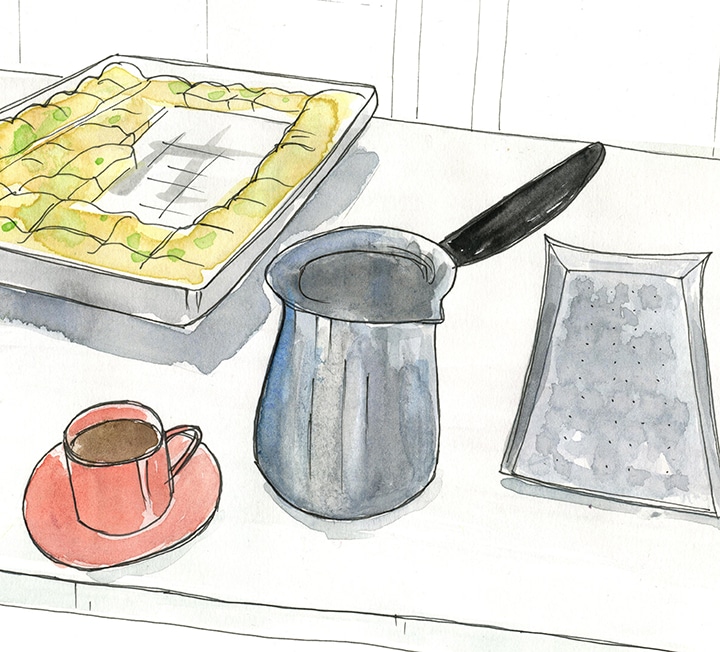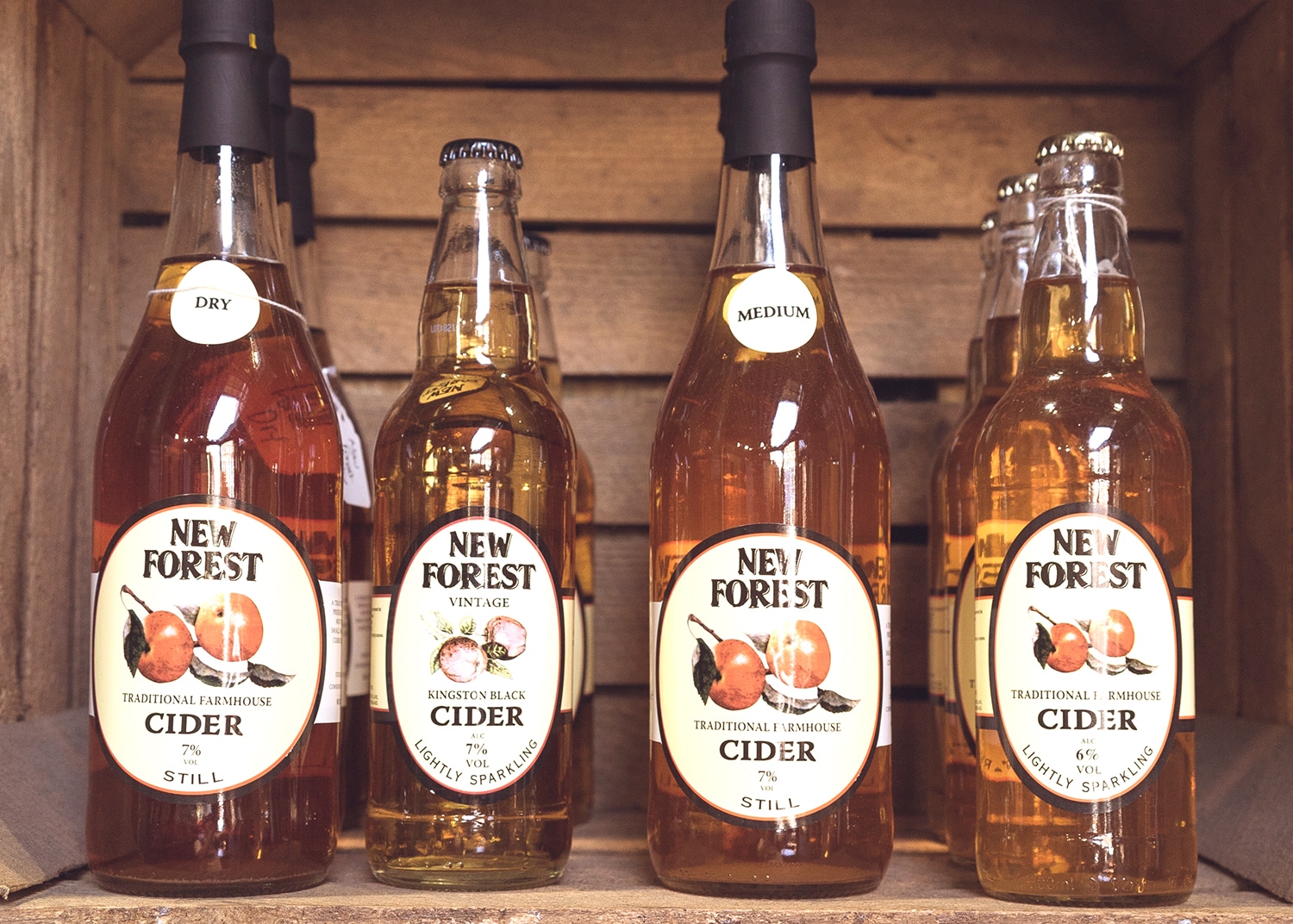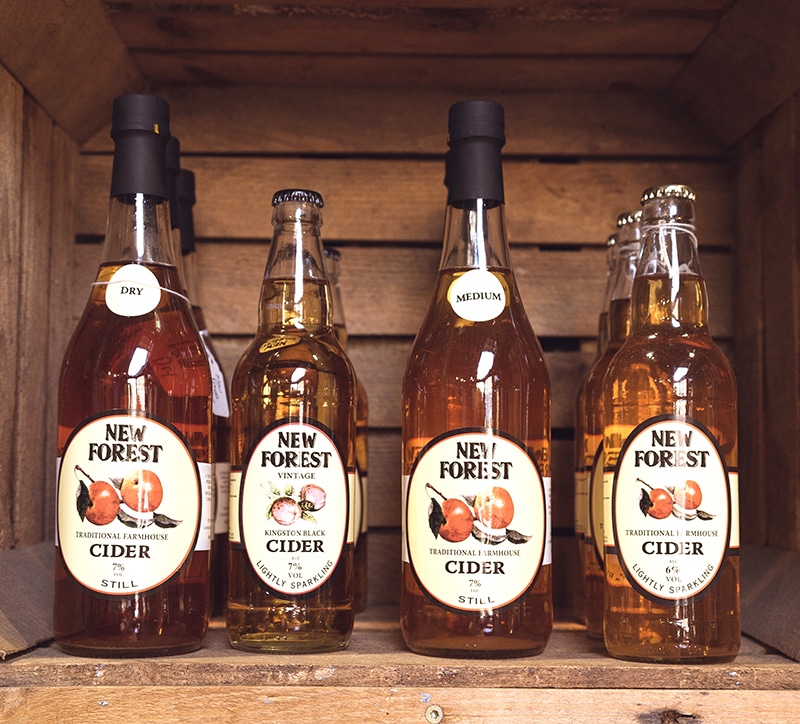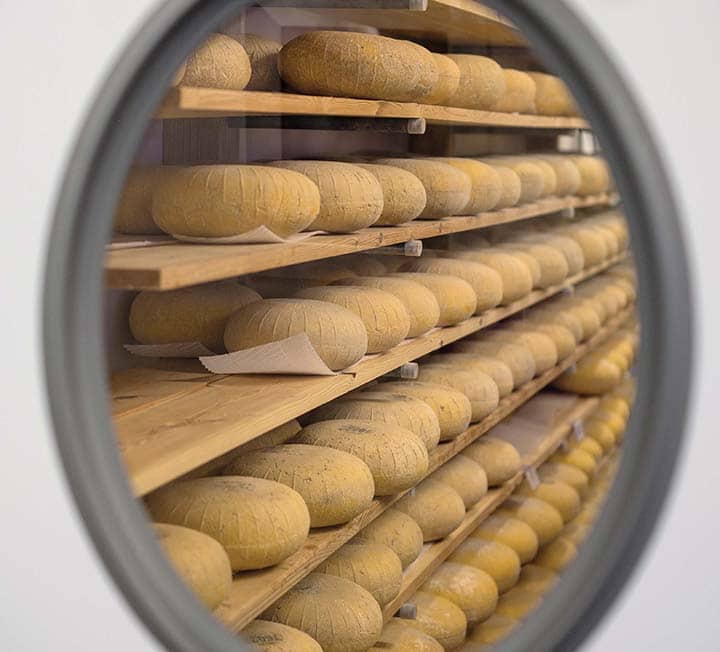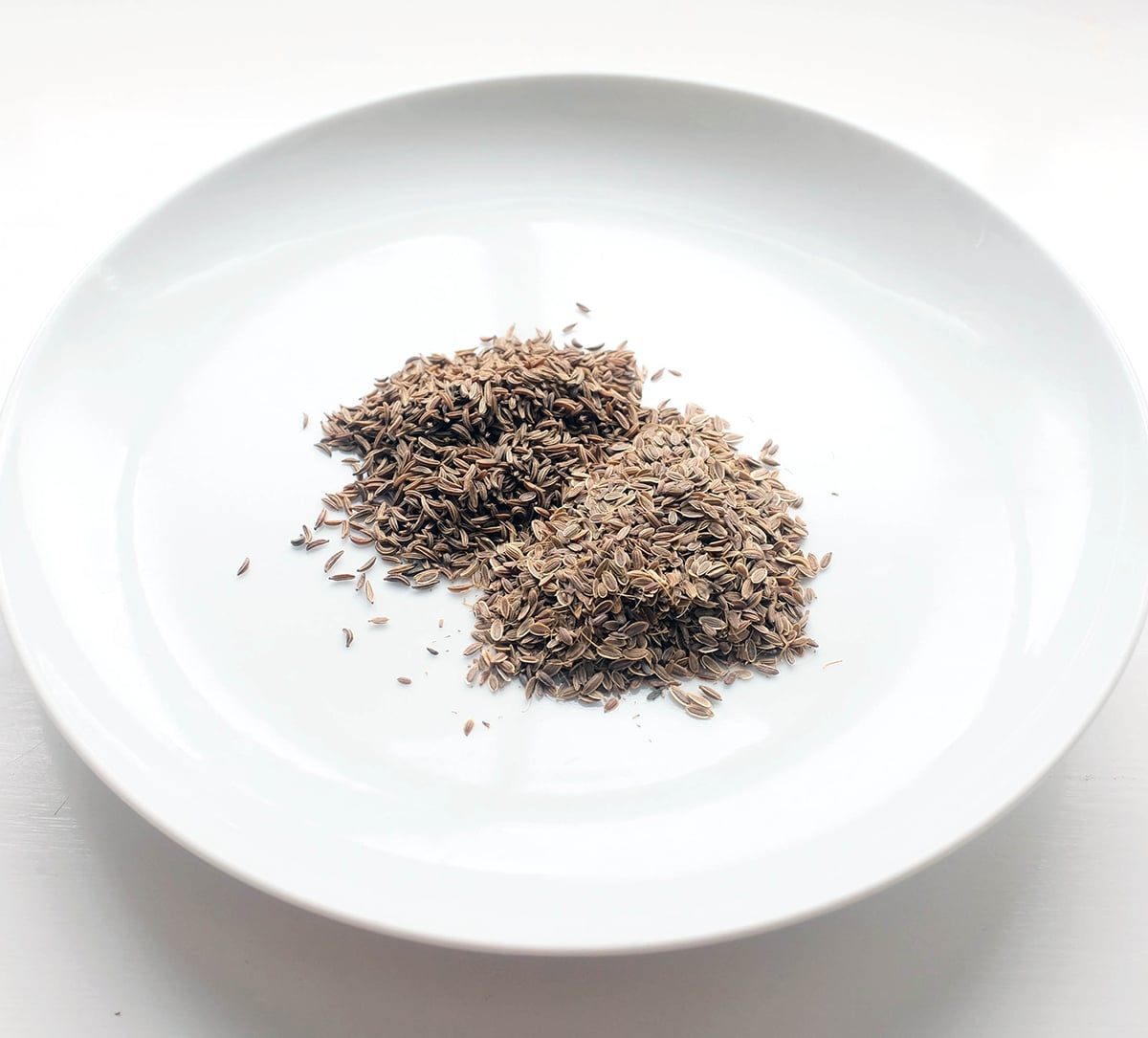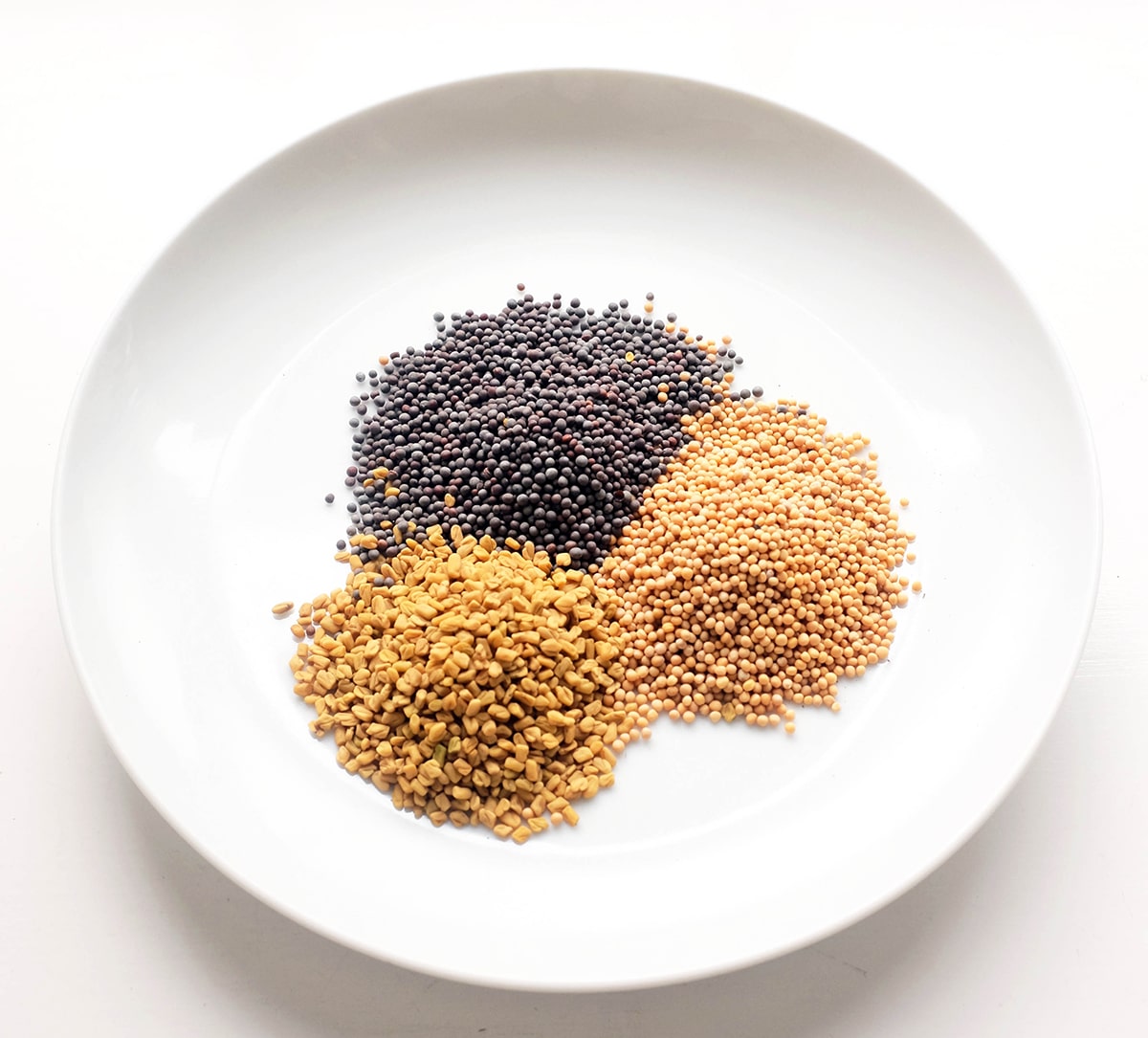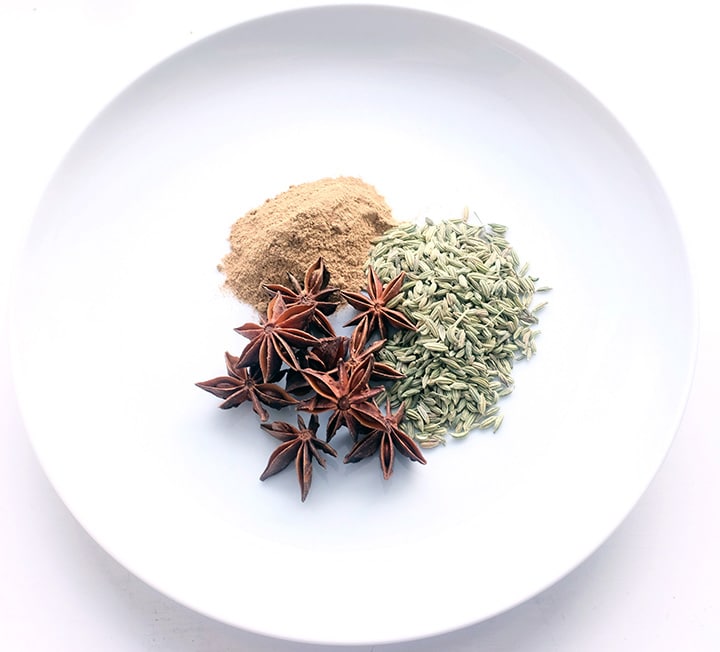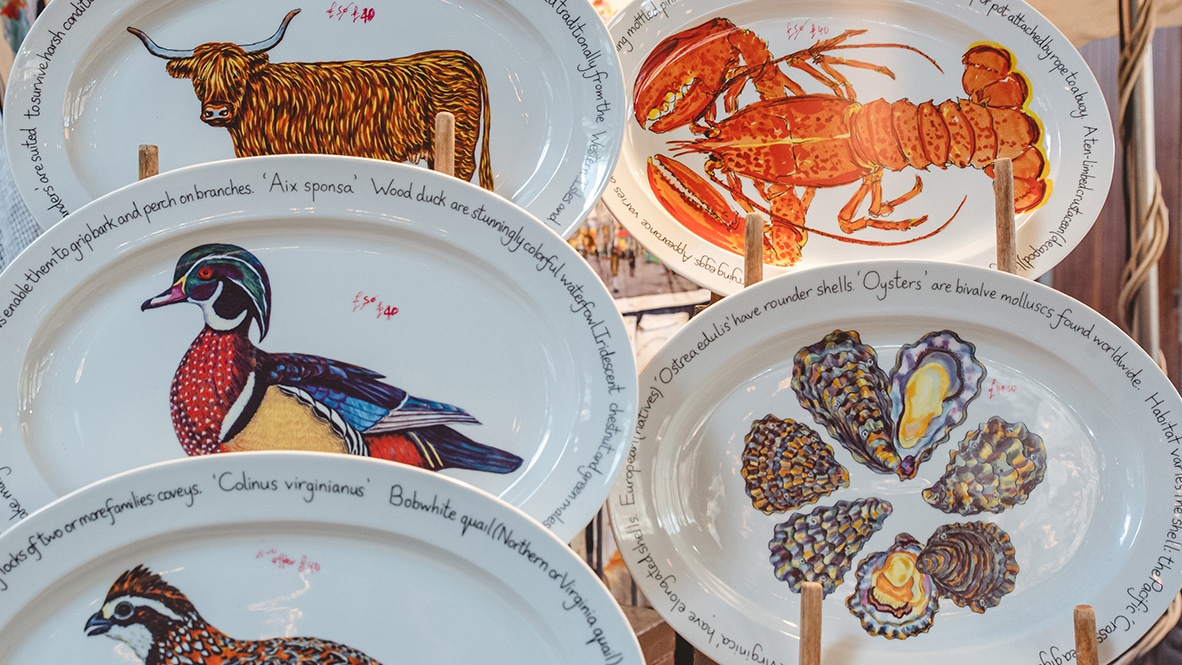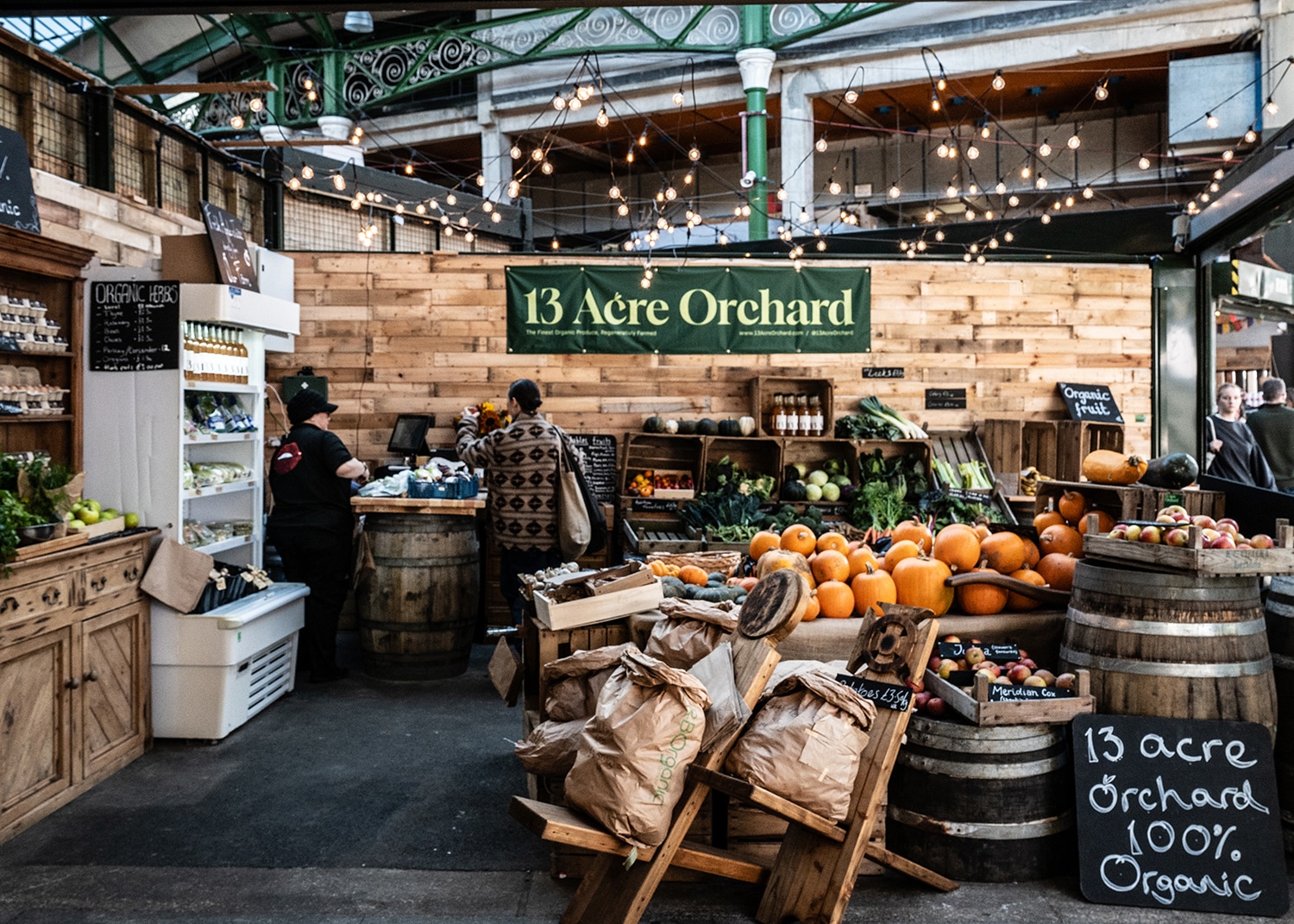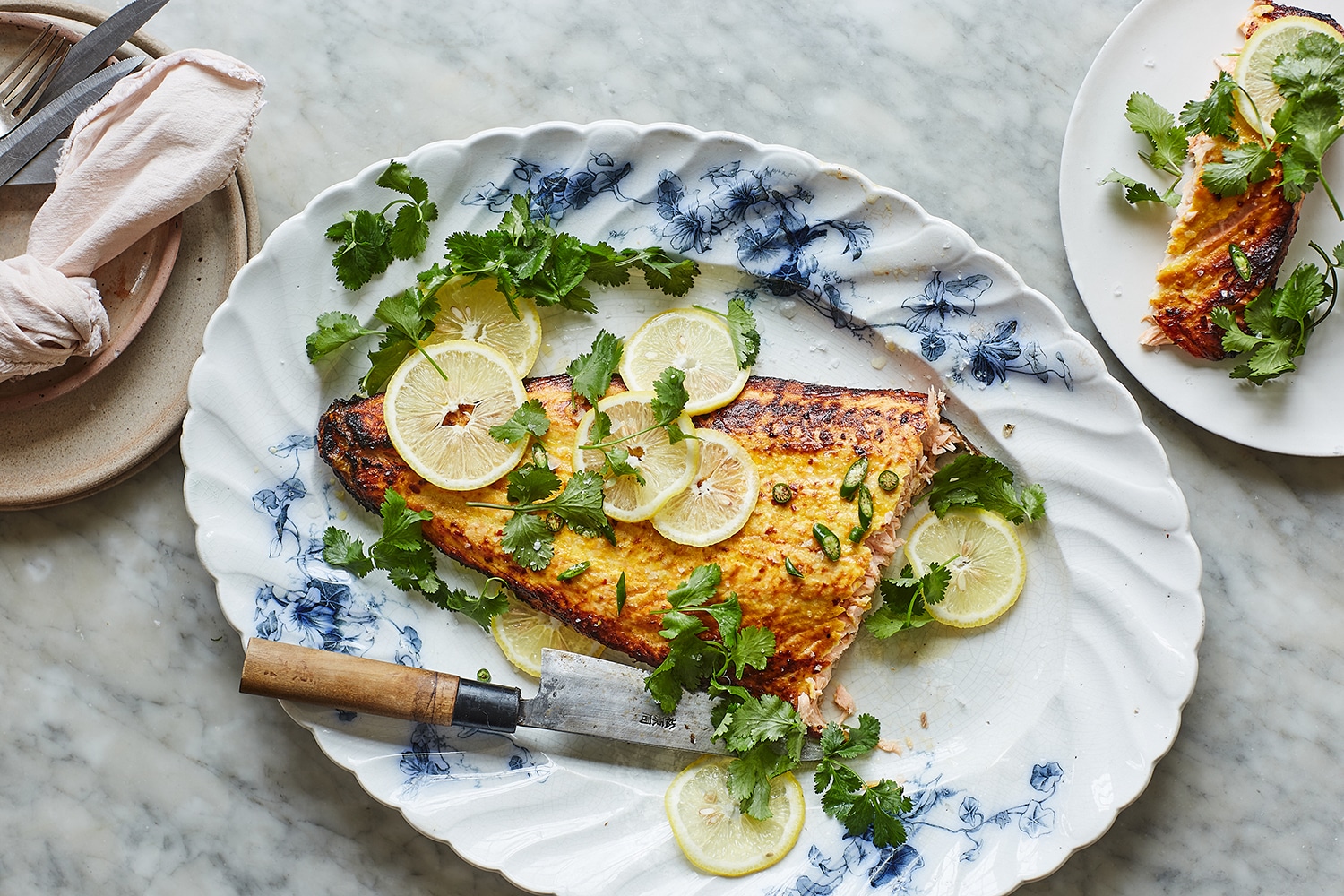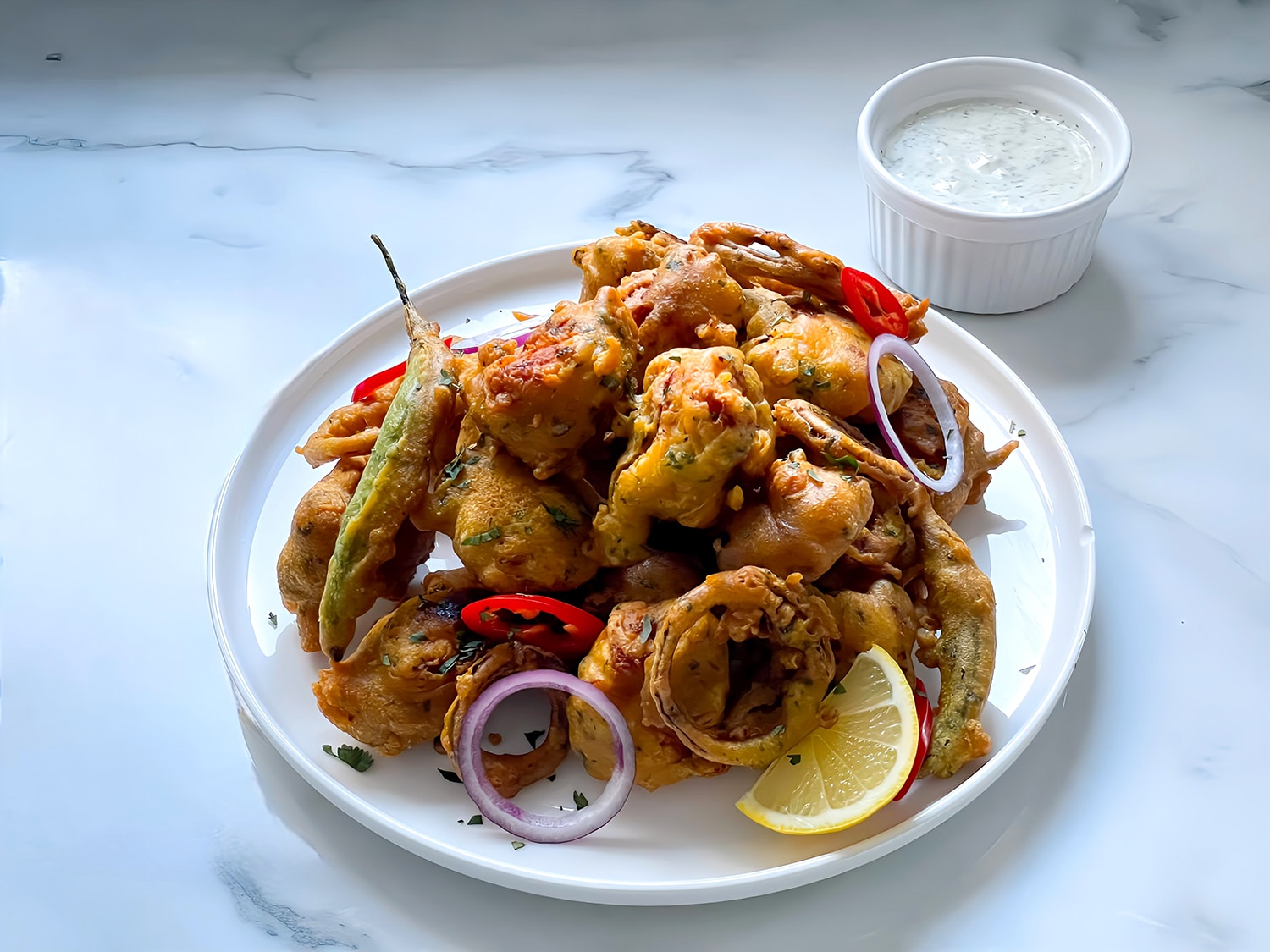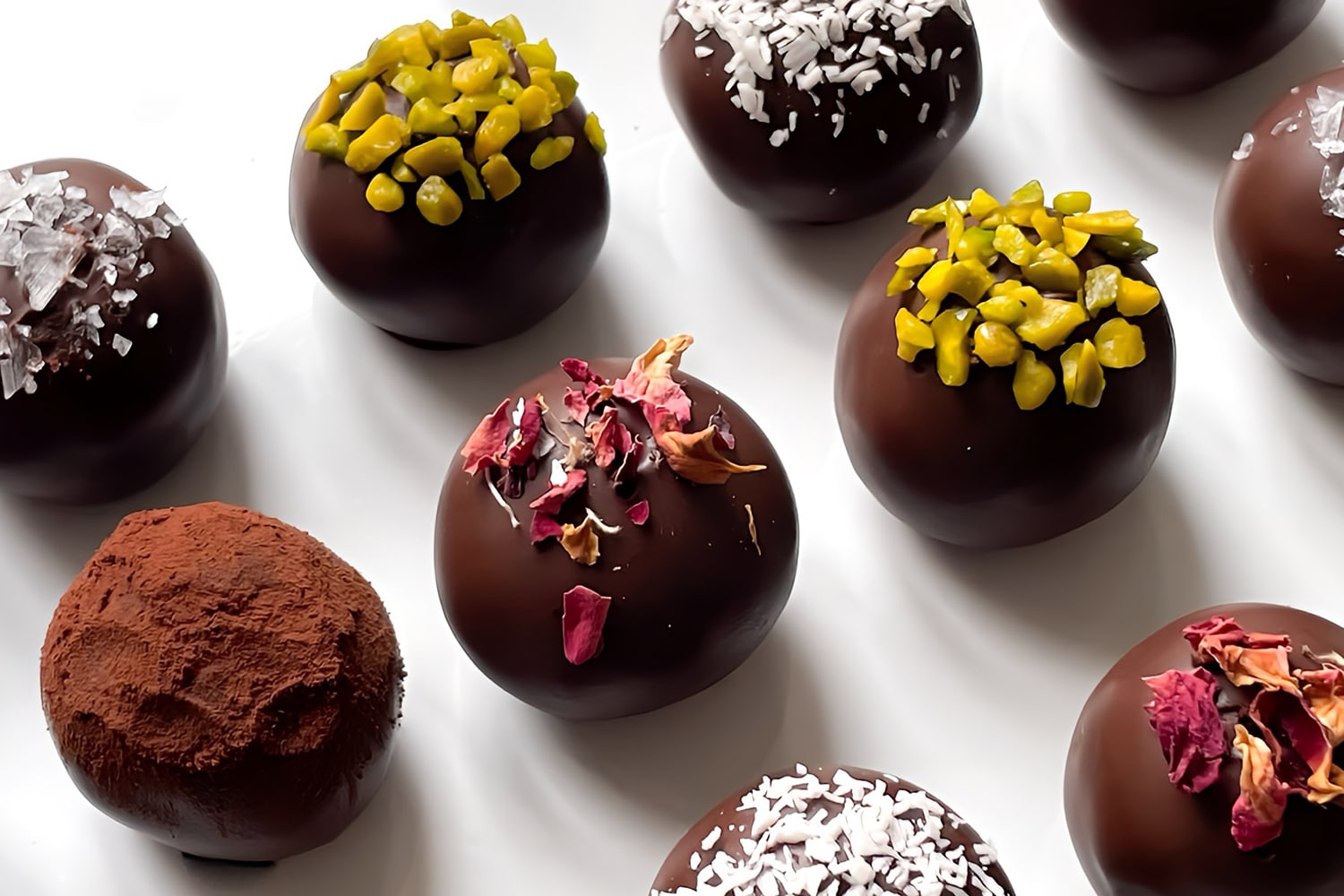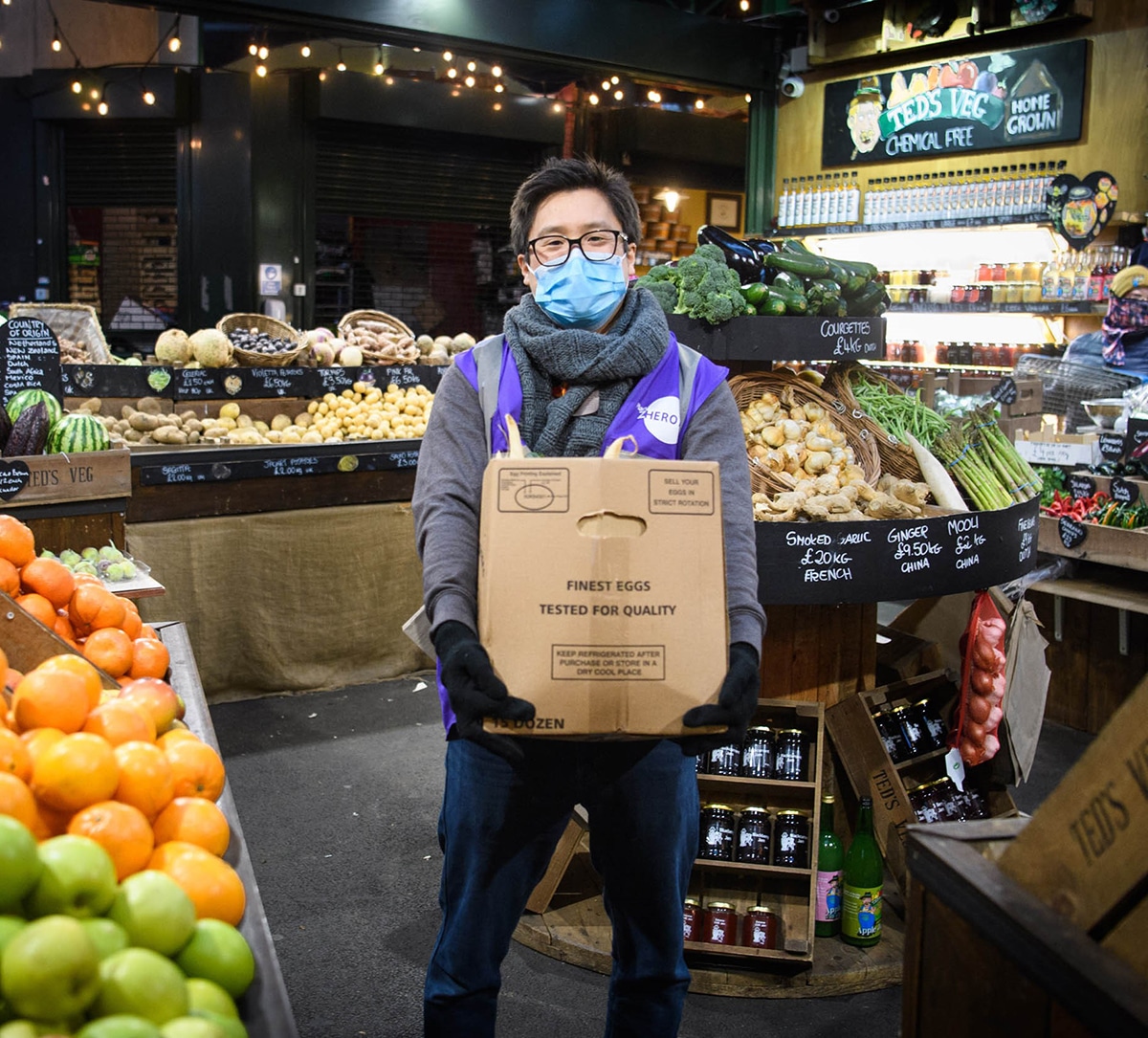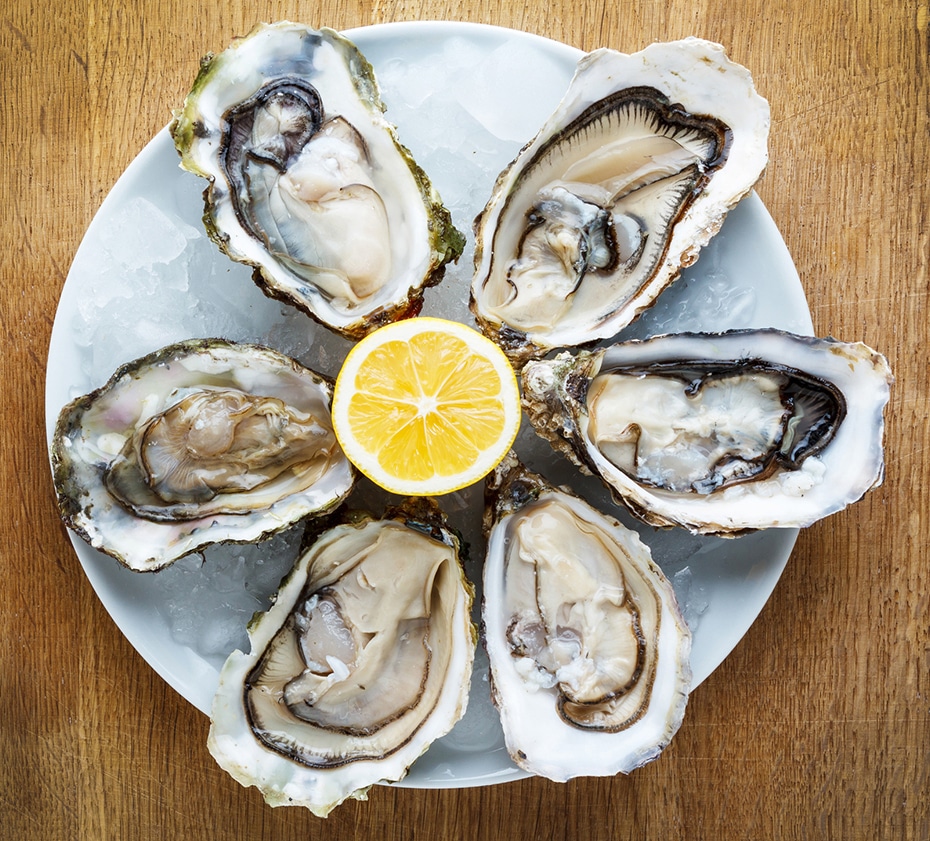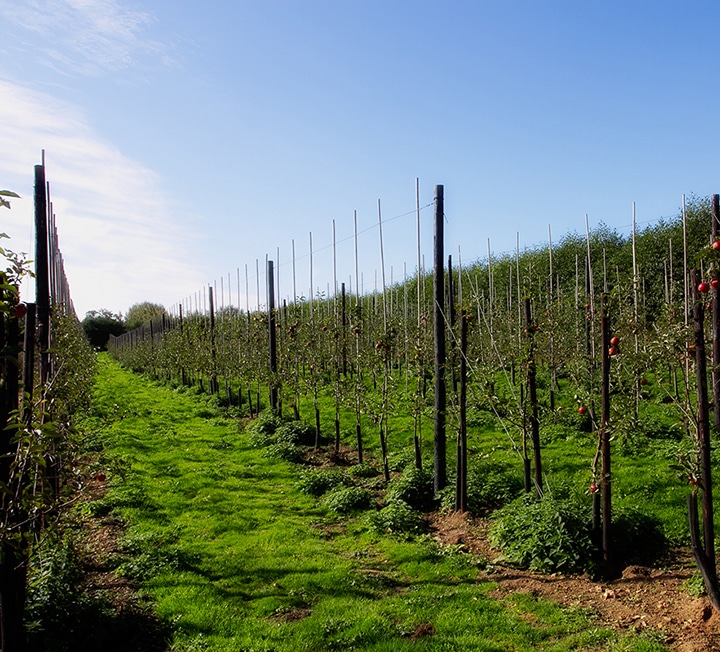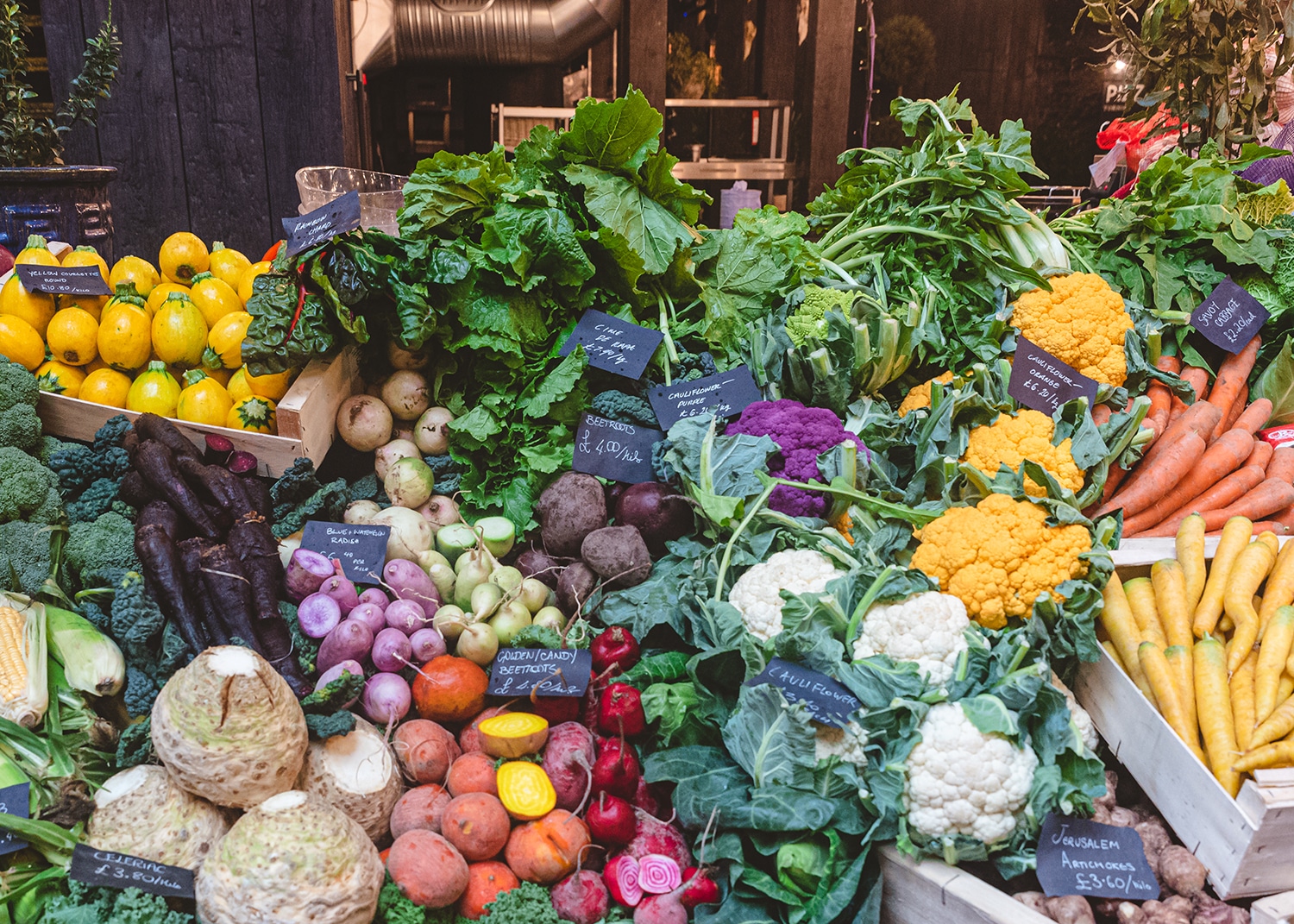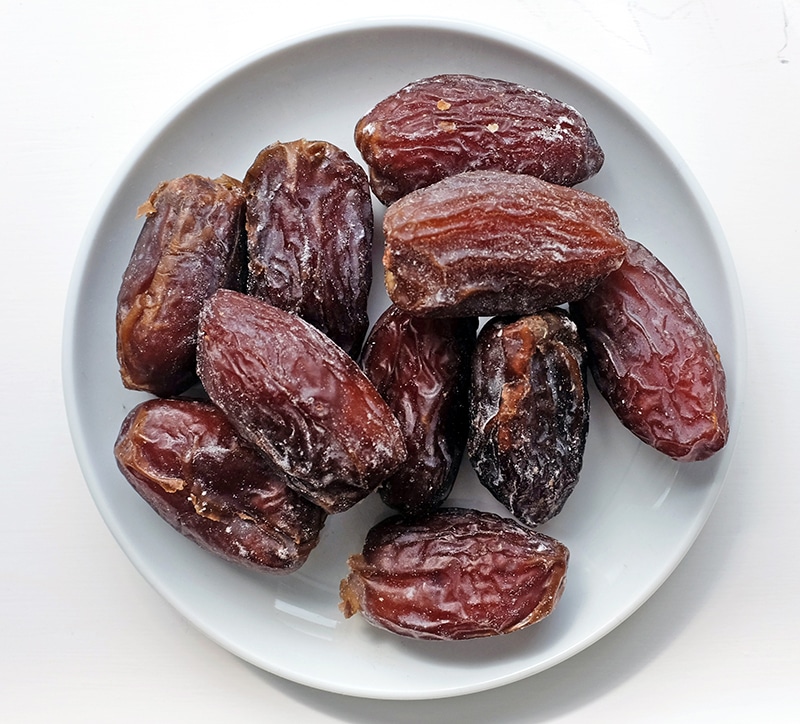The pursuit of happiness
Giulia Crouch on why the act of buying food at a food market can add to your happiness as well as your fridge


“SHOPPING IS A TRANSACTION – BUT IT’S ALSO AN EXCHANGE OF IDEAS, A CONNECTION BETWEEN TRADER AND CONSUMER”
Words: Giulia Crouch / Imagery: Sophia Spring, Orlando Gili
I’ve been thinking a lot about food and happiness lately; what does it really mean to eat well?
In fact, it’s the question I explore in my new book, The Happiest Diet in the World, in which I examine the eating habits of the longest-living populations on the planet – places known as the ‘blue zones’. It’s not a diet in the modern sense – a short-term period of unsustainable restriction that’s supposed to result in weight loss but usually results in misery – but instead pertains to the original meaning of the word: the Greek ‘diaita’, meaning ‘a way of life’.
It’s a way of life because food isn’t simply about feeding yourself – we’re not cars and our dinner isn’t fuel. Instead, it can be many things: a creative outlet, a way to relax, a source of comfort and excitement. Eating a great meal is an undeniably fun thing to do.

But primarily I think food is about connection. Cooking for someone is a way to bond with them and making a recipe is a way to connect with its writer. Then, there’s the act of buying food – a transaction of money for goods but also an exchange of ideas, a connection between trader and consumer.
In a supermarket it’s hard to access this feeling. Faceless, uniform and impersonal, produce is presented in plastic-wrapped trays from giant, buzzing fridges. But outdoor markets? Outdoor markets feel alive. These dynamic, ever-changing, playgrounds of food offer knowledge, inspiration and an experience that’s guaranteed to make you smile.
As a Londoner and someone who’s lived and worked within its proximity for many years, I think there is no finer example of this than Borough Market. Dating back around 1,000 years, Borough is composed of a huge host of independent traders selling everything from French cheese to Iraqi street food. It’s run by a charity, overseen by a board of volunteer trustees, which places a huge amount of importance on the wellbeing of the whole community – shoppers, traders and neighbours. I think you can feel this in the friendly, collegial atmosphere.
To me it’s always been a joyful place. I skip the crowds and visit on quiet weekday mornings or afternoons and take great pleasure in browsing without a shopping list, seeing what takes my fancy and what novelties I might discover. I come away with all sorts: jarred tuna in olive oil like you’ve never tasted before, a niche type of dense, nutty, German rye bread that you can’t buy anywhere else, mozzarella di bufala from my nonna’s Italian region of Campania, and some mushroom pâté too delicious to leave behind.
I love the feeling of closeness I get to the food. I can pick up and inspect the cabbages, I can squeeze a tomato to check its ripeness, I can smell the lemons and oranges as my mum’s voice chimes in my head: “If it smells of nothing, leave it behind.” And I can ask the seller where the produce has come from, what’s really fresh, what’s really good right now. Shopping like this leaves me feeling enlivened and full of ideas about what to cook.
While I’m always pleased with my purchases, it’s the interactions I’ve had in the market that leave me feeling so happy. I love food but I love the human stories behind food even more and Borough Market is chock-full of them. There are brilliant characters around every corner, each one of them a passionate expert in their speciality – nuts, British cheese, Calabrian ingredients, smoked fish, bread, you name it.
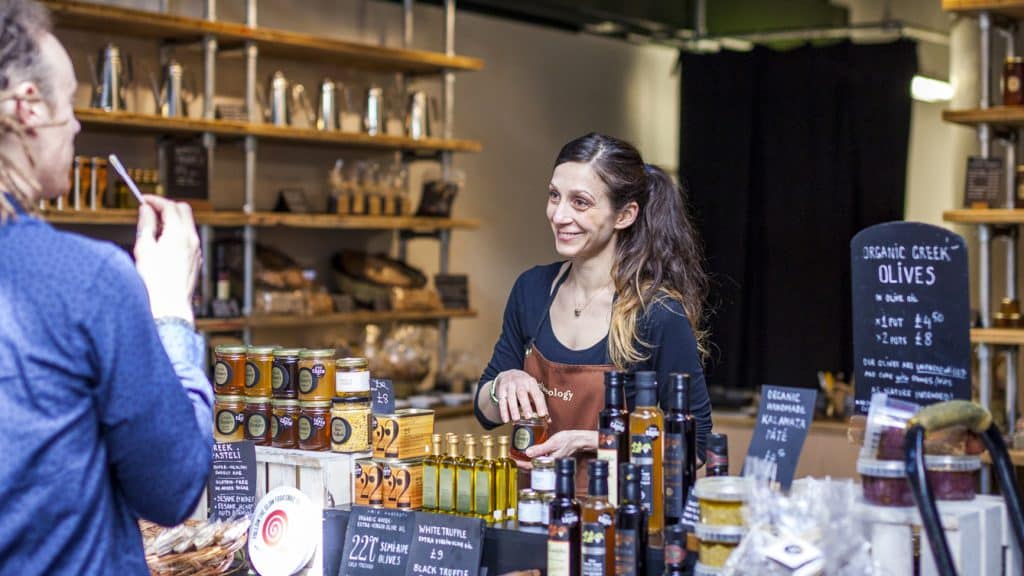
Marianna Kolokotroni, founder of Oliveology, is a font of knowledge about the Greek products she sells. She can speak at length about provenance, the varying tasting notes of olive oil and explain the difference between commercial olive production and her naturally cured ones. Then there’s Steve Hook behind Hook & Son, a stand selling organic, unpasteurised dairy products, who has endless entertaining and informative anecdotes. Who knew milk could be so fascinating?
There is always something delightful about people who are really enthusiastic about what they do and when what they do is food there’s an added element of generosity to it. These people want you to be well fed. Sophie Bertucat, manager of Olivier’s Bakery, epitomises this. “I could just say customers are coming because it’s bread and everybody needs bread … but no, it’s much more than that,” she says. “We’re passionate about baking. To be able to serve such quality products, you must be in love with and believe in what you are doing. It’s the love of food you feel here. You take a bite of wonderful fresh bread or a fresh pastry, and you feel the love of who made it. It makes you feel at home.”
You can taste the care that’s gone into the food and you can see the friendly and familiar faces of the people behind it. Philip Crouch (no relation!), owner of The Parma Ham and Mozzarella Stand, says that what’s so special is you’re often buying the product from the person who actually made it. “Where else do you get that?” he says. It feels more personal because it is.
“I would say that people come for the exchange with the traders,” says Philip. “My daughter Esther is a fantastic asset to the business because she’s friendly, she’s knowledgeable and she’s there – you don’t get that consistency when you go to a supermarket. You don’t see the same faces. All the stalls have impeccable products and are impeccably curated but I think it’s the relationships that are created between trader and customer that keeps people coming back.”

Nicholas Fitzgerald, owner of Mexican street food stall Padre, thinks it’s also the variety of food and people at Borough Market that makes it so captivating. “It’s a kind of microcosm of London,” he says. “And what’s the best thing about London? It’s the diversity – it’s definitely not the house prices or the traffic. At Borough Market there’s such a wide range of traders selling such a wide range of things. You can get Indian food, Japanese food and Iraqi food. It’s a representation of what’s going on in London.”
Of course, there’s the beauty of the market too but more than that, with its twists and turns it offers a sense of mystery, of intrigue. “It’s the kind of space where you’re constantly discovering and exploring,” says Nicholas. “It’s not a symmetrical space like other retail offerings. Each alleyway is different and there’s something new and surprising on every corner. It’s unusual to navigate and it gives it a sense of adventure.”
Finally, if you visit with friends you can share plates with them, try new foods together and compare notes. Eating food in company, as I learnt in my book, is scientifically proven to make you feel happier than eating it alone and what a marvellous place to do it; a true hub of eating well. Now that is the diaita for me.
The Happiest Diet in the World by Giulia Crouch (New River, £16.99) is available now
In cider trading
Tomé Morrissy-Swan visits The London Cider House to discover how the fading art of cider making has enjoyed a very welcome renaissance
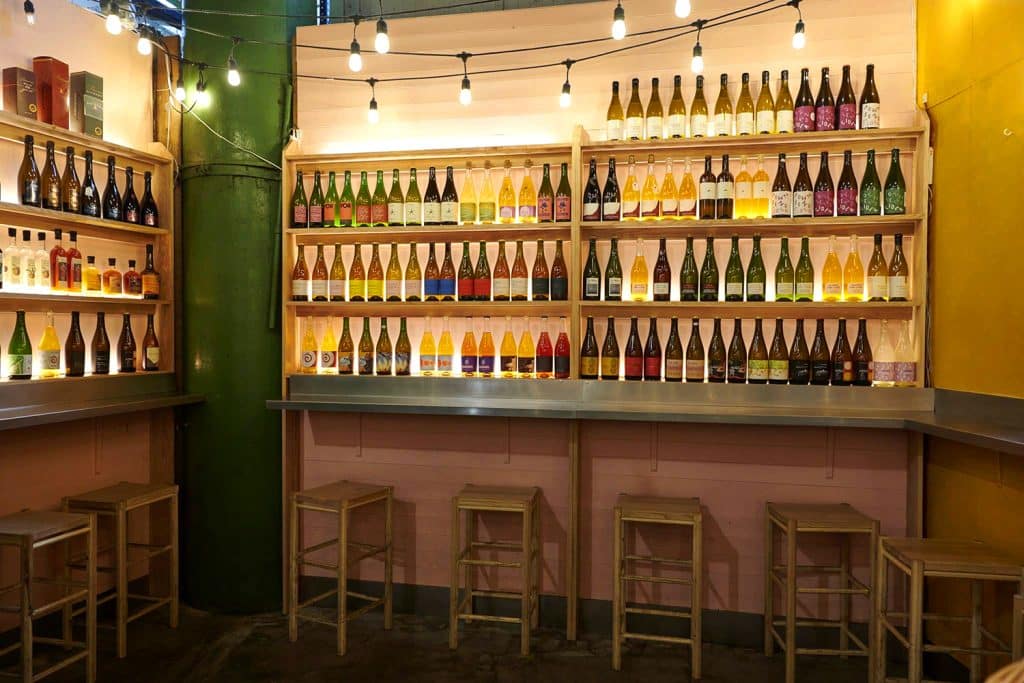

“THERE’S SUCH A BREADTH OF VARIATION: DON’T THINK THAT IF YOU’VE TRIED ONE CIDER YOU’VE TRIED THEM ALL”
Words: Tomé Morrissy-Swan / Portrait: Orlando Gili
When New Forest Cider started selling cider at Borough Market 25 years ago, it was a very different world. To most, the drink connoted two-litre plastic bottles of cheap white cider, underage drinking and getting blasted at festivals. “It was cans of very cheap, nasty commercial ciders, which really don’t have many apples in them at all,” says Mary Topp.
Over the past two decades that has changed. In the mid-noughties Irish brand Magners conquered the British market but, alongside that, a cohort of smaller artisan producers were growing more confident. New Forest Cider, based near Burley in Hampshire, was one of the key drivers of this renaissance. It was founded in 1988 by Mary’s father, Barry Topp, who inherited a smallholding with an orchard, quickly bought some pressing equipment and was soon making cider on a commercial scale, mostly with apples from Somerset and Herefordshire.

I’m talking to Mary at The London Cider House, a bar and shop within Borough Market owned by cider makers Ted Dwane, Tom Oliver and the Topps, as well as Felix Nash of The Fine Cider Company. The aesthetic is more akin to a modern wine shop and bar – elegant bar seating; bottles with prices scribbled in white marker lining the walls – than a pub with a barrel of scrumpy out the back. But the cider Mary pours me is inspired by scrumpy. “We have quite negative connotations of scrumpy, of backyard cider,” Mary explains. “However, we like to think ours now is a more grown-up sister of the nostalgic scrumpy of days gone by. It’s traditional scrumpy in a sense, containing 100 per cent apple juice, but this one in particular is a lightly sparkling cider.” It’s beautifully sweet with a nice, balanced acidity, a delicate fizz, and not too rough around the edges. It has been pasteurised, filtered, kegged and carbonated. “It’s a little bit cleaner than a traditional cloudy scrumpy,” adds Mary.
In the 1990s there wasn’t as much artisan cider as today – although you could find it at farm shops and many West Country pubs. Barry Topp spent hours driving up and down the country to fairs, but always wanted a London location to showcase his product. He ran a stall at the Food Lovers’ Fair of 1998 (which led to Borough Market in its modern form) and has run one here, in various guises, ever since.
Mary came on board in 2008, when the shop was still called New Forest Cider (it would later be renamed The Cider House, before changing again when it reopened after Covid under the current ownership). “Around 2010 there was a real boom in cider,” Mary explains. “This was post-Magners, they’d done a lot of marketing, and everyone was getting interested in cider.” That included many up-and-coming producers, who Mary wanted to showcase, and the shop soon sold ciders from across the country.
As with wine, there are myriad regional and varietal differences in cider. A key one is the split between east and west. In eastern counties like Kent, Sussex and Suffolk, cider is made mostly with culinary fruits, and is more acid-driven, according to Mary. In the west, cider fruits reign. They are smaller, have tougher skins and are more bitter, not great to eat. They produce more tannic ciders. Mary recommends Gospel Green, based in Hampshire, as one of her favourite eastern-style ciders. Of the western-style ciders, Pilton is one of the bestsellers at The London Cider House. Its ‘keeved’ ciders – a traditional method of enhancing the natural sweetness of the fruit – are a great introduction, says Mary.
Most Brits are unaware of the huge variety of ciders produced in this country. It can be still, sparkling, dry or sweet, distilled or fortified, made in a similar way to a pet nat wine, or bottled and fermented using the Champagne or Normandy methods. “It’s like the wine industry, there’s such a breadth of variation,” says Mary. “Don’t think that if you’ve tried one cider you’ve tried them all.”

One of The London Cider House’s owners is Tom Oliver, a man who has emerged as a leading cider maker over the past 25 years. Oliver started selling cider made on his family’s farm in 1998, when it ceased hop production. Today, he makes 100,000 litres per year, mostly using apples from nearby farms in Herefordshire, which he describes as the “perfect area for growing cider fruit.” When Tom began making cider there were around 12 makers in the county. He has helped it go from a “cheap product” to a valued drink, and there are now around 50 in Herefordshire.
“When I started making cider, it was pretty much based around dry, medium and sweet, maybe a sparkling,” says Tom. “That’s how people thought about cider.” For him, the craft beer explosion of the noughties piqued people’s tastebuds and encouraged them to seek out a wider range of drinks. Oliver makes 36 different bottled products, from blends rather than single varietals. Gold Rush, a barrel-aged, medium-dry cider, is one of his bestsellers, and each year’s drink tastes slightly different. His lush, sweet keeved perry is another popular choice. A slower seller is his Vintage, a dry, still cider. “That’s my type of cider,” he beams.
Artisan cider remains a niche, consumed by a tiny minority. “That’s one of the things we’re working on,” says Tom. Part of that drive is to boost its appeal as a food accompaniment. At The London Cider House, most come in 750ml bottles, which connotes an aperitif, or something to sip alongside a meal, rather than to simply get drunk. Mary recommends cider before a meal, or with starters like mussels. For Tom, it’s great with cheese (especially cheddar), a Christmas ham or even one of our national dishes. “A medium sparkling cider with a spicy medium-hot curry is the best drink.”
Britain drinks the highest volume of cider in the world, “but it’s not ingrained in our culture,” Tom laments. “Some people enjoy cider and a roast lunch on Sunday, but we haven’t got any longstanding food associations.” For the owners of The London Cider House, it’s high time that changed.
Soft power
Cheese writer Emma Young on the soft, light, fresh-tasting cheeses of springtime


“THE ABUNDANCE OF SOFT, YOUNG GOAT AND SHEEP CHEESES IS IN HARMONY WITH SPRING’S EVER-LENGTHENING DAYS”
Words: Emma Young
The arrival of spring brings with it longer days, warmer weather (please) and a wider variety of exciting cheeses on cheesemongers’ counters.
Among approximately 6,000 other factors, some of my favourite aspects of cheese are batch variation and seasonality, and in particular the new additions we see gracing those counters in the springtime. Not all cheeses are made year-round. Most kidding and lambing occur at the beginning of the year, with kids and lambs galore creating adorable, destabilised chaos on farms when spring rolls around. With their arrival comes the natural start of milk production. This is why, at Borough Market, you will see an abundance of soft, young goat and sheep cheeses, in beautiful harmony with the season’s ever-lengthening days.
For Molly Powell of Mons Cheesemongers, the arrival of these spring cheeses gives her the dopamine hit needed after a cold, dreary British winter – a “fresh sense of optimism that spring has sprung somewhere”, and the relief that you can “experience it through food if not through the weather!” The most numerous spring additions come in the form of dainty, elegant cheeses which we cheese folk call ‘lactics’. These are made slowly and gently, with a lactic acid coagulation playing a key role in transforming the milk to curd, and then to cheese. These cheeses, which sometimes have wrinkly rinds, ash coats or a topping of herbs, come in a variety of shapes but are usually on the smaller side.

There are also cheeses that aren’t strictly seasonal, but whose character fits the mood at this time of year. During the warmer months our eating habits change and lighter, fresher meals are more welcome than powerful, full-flavoured, hearty dishes. I, for one, see a significant increase in my mozzarella di bufala consumption around now, and cheeses such as ricotta and stracchino start making cameos in my fridge. Fresh cheeses like these – cheeses that have seen little to no ageing – have flavours that are simple and representative of the milk (especially when made with raw milk) and haven’t developed the complex profile that come from long ageing and the controlled breakdown of components within the milk.
When you visit Borough Market, or any cheese shop, ask the cheesemongers if they have anything new and in season, but remember the classics also and don’t ever feel restrained to a certain style. I certainly never do. On a warm spring day, if you fancy a stilton instead of a goat’s cheese, no one will stop you – in fact you’ll be encouraged.
Here are a few of my favourite spring treats from this year:
BUCHETTE DE MANON
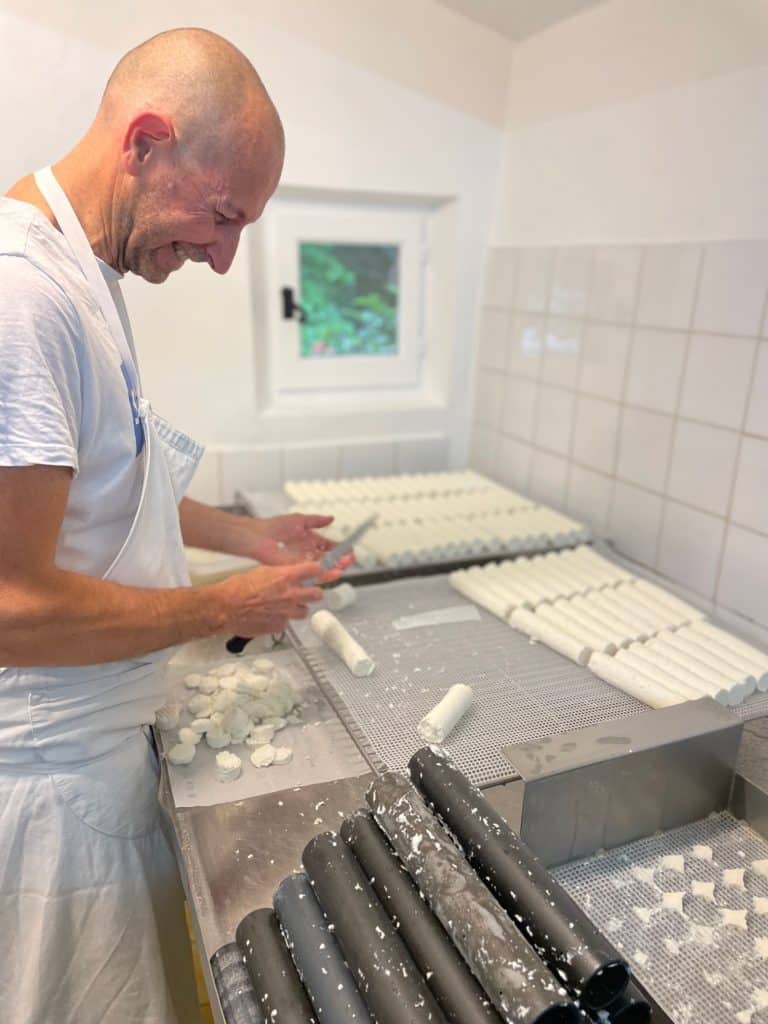
Buchette de Manon is a lactic goat’s cheese from Provence, available from Mons Cheesemongers. It is dainty and cylindrical in form – ‘buche’ means log, so a ‘buchette’ is a little log. Made by François and Vanessa Masto using the milk of their Rove goats, this has a gentle, elegant flavour profile, consciously minimal in its salt levels to allow the superlative milk flavour to really shine. It has a sprinkling of the herb ‘sarriette’ (savoury) on top and the texture ranges from soft and broken down, to a more structurally sound, whipped and aerated texture in younger batches.
CASTILLON FRAIS
How can a young, fresh, rindless cheese exude so much flavour? Castillon Frais, made by David and Fanette Ladu, is one of life’s mysteries. Also available from Mons Cheesemongers, it is a raw sheep’s milk cheese from Provence. It is so young and fresh that it arrives in vacuum-sealed bags and there are bumps on the surface of the cheeses that are still present from the holes in the drainage moulds they are formed in. Against all explanation this cheese has flavours of walnut & celery within – a veritable Waldorf salad! Castillon Frais can be (and in my house always is) eaten as it is, simply with a good baguette. It can however be used in a plethora of dishes – maybe crumble it over some roasted veg and potentially crack open a bottle of rosé with it if you’re feeling fruity.
GRACEBURN
This is a cheese which is not made seasonally, but really comes into its own at this time of year. Graceburn is a marinated, Persian fetta-style cheese made by Blackwoods Cheese Company in Kent. Graceburn’s marinade consists of cold-pressed English rapeseed oil, garlic, thyme and black pepper, making it, at times, taste like a full roast dinner – without the meat! Graceburn can be eaten as it is, drained from the jar, or eaten straight from the jar with a fork (this is my eating method of choice). It is perfect atop roasted vegetables or in any number of salads, and even in savoury pastries or as a addition to pasta or soup. I have yet to find a poor match. It even works with pickled onion Monster Munch (other crisp varieties are available).

PYGHTLE
Pyghtle (pronounced Pyh-tuhl) is a relatively new cheese on the British cheese scene, made by Emily Tydeman at Broughton Hall Farm in Suffolk. Emily makes unpasteurised sheep’s milk cheeses, cylindrical in shape with a wrinkly geotrichum (a yeast) rind. These cheeses are just back in season now, for their second year on the counters of Neal’s Yard Dairy. As they are new AND made with raw milk, the textures and nuances will vary throughout the season – something which should be celebrated. The batches which Neal’s Yard Dairy are receiving now are ricotta-like in texture – light and fluffy. Contrary to widespread belief, not all goat and sheep milk cheeses are strong and farmy, with this being a perfect example.
HEVER
Alongside these fresh, young seasonal beauties, we should still make sure we’re giving our attention to other styles of cheese. I love a wild card and my cheeseboards and selections will always keep you on your toes! Hever is a new cheese, also from Blackwoods Cheese Company, which has been in development for about a year, only really making its entrance onto the Market this spring. This is a washed-rind cheese, similar to a Burgundy classic. It is unashamedly bold, not hiding its inherent funk. Its texture is silky smooth, with a breakdown beneath the rind giving a secondary texture in the mouth. The flavours are brothy, savoury and meaty without going overboard. I highly recommend you seek this one out.
OTHERS TO SEEK OUT
The cheeses on Borough Market’s stands are ever-changing. There are some incredibly special cheeses there right now, including some at Brindisa from the Canary Islands, cheeses which have only just entered the UK market. Flavour-added cheeses can be gimmicky, but when they are executed properly they can be a thing of beauty, something that L’Ubriaco Drunk Cheese does well – for spring, look out for their Luna di Miele (a goat’s cheese in honey) and Vento D’Estate (a cow’s milk cheese in herbs and hay). For all your fresh cheese needs I cannot recommend highly enough The Parma Ham & Mozzarella Stand. Their cheeses are all impeccably sourced and I always head in their direction for my mozzarella di bufala, ricotta and occasional burrata needs.
The Cheese Wheel by Emma Young (Ebury Press) is available now from The Borough Market Store
Sowing seeds
Stephanie Slater, founder of the School Food Matters charity, on how the Young Marketeers programme at Borough Market plants skills and knowledge that can change young people’s lives
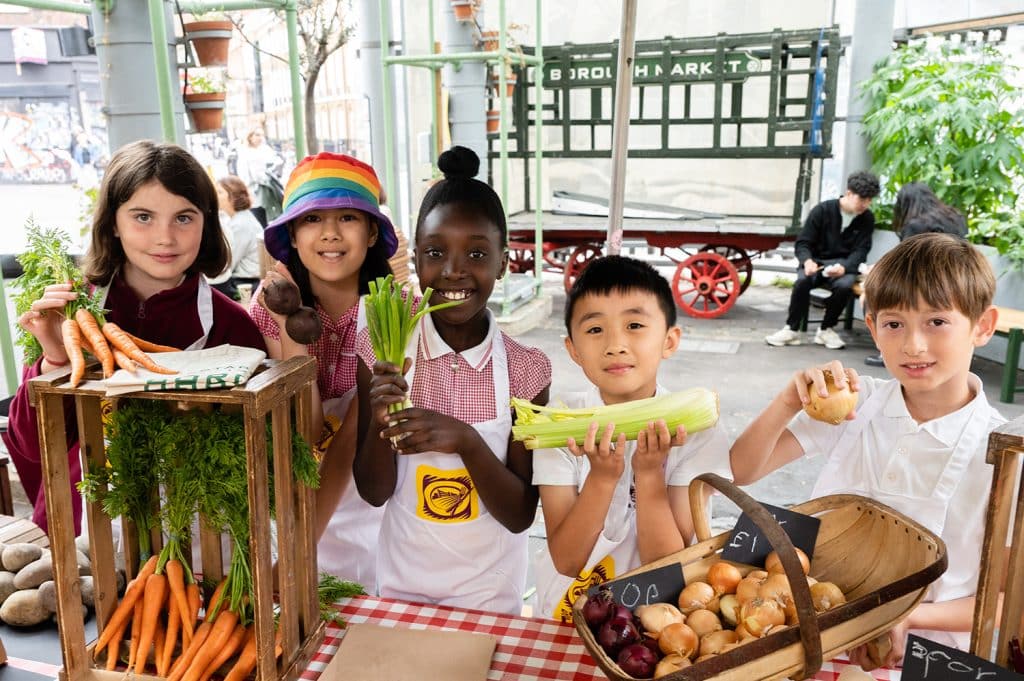

“WE WANT YOUNG PEOPLE TO BE DISCERNING CONSUMERS AND TO UNDERSTAND THE IMPACT OF THEIR FOOD CHOICES”
Words: Mark Riddaway / Images: Adrian Pope
It was at a conference in 2007 that Stephanie Slater, the founder of a charity devoted to improving school meals, was party to the eye-opening testimony that would broaden the focus of her work and lead her a few years later to the halls and stalls of Borough Market. “I heard the headteacher of a primary school in London say that children in his school couldn’t identify an onion,” she says. “Not an aubergine or anything even slightly funky – a basic onion. I just thought, wow, that is a massive disconnect.”
Stephanie’s charity, School Food Matters, is now as committed to food education projects designed to bridge such glaring gaps as it is to its original calling of making children’s lunches less grim. “We want young people to be discerning consumers,” she says. “We want them to understand the impact of their food choices on their bodies and the planet.” The Young Marketeers programme, which began at Borough Market in 2013 and is now a cornerstone of the charity’s work, is part of that important mission.
There are two strands to the project, one for primary school students, one for secondary. The younger cohort are given the skills and resources they need to grow their own fruit and vegetables at school. After further training from the Market’s traders, they then bring their produce to Borough to sell it to directly the public, with all profits going to food distribution charities. “We want to make a solid connection that food comes from the soil, not the supermarket,” says Stephanie. “We see the pride, the awe and the wonder of primary school children who have planted some tiny seeds and now they’ve got all this stuff to sell, all this beautiful veg. It still blows my mind.”

Secondary school children, meanwhile, are involved in what Stephanie says is “quite a chunky piece of product development”: producing soups using surplus vegetables (which in future will be provided by Plan Zheroes, the charity that collects and redistributes leftover food from Borough’s stalls at the end of the trading day) and pairing them with fresh ciabatta baked under the tutelage of Bread Ahead Bakery & School. “The young people work with our food teacher to create soup recipes and a food panel from Borough, who are very exacting in their standards, go out to the schools to taste-test them.” The students then come to the Market to sell their wares, putting into practice what they’ve learnt about food labelling, marketing, pricing and sales.
Stephanie cites some striking examples of the misconceptions these projects are seeking to overturn: a young child who didn’t think a cucumber was ready to be picked because it hadn’t yet grown its plastic wrapper, older girls selecting ingredients from a surplus food hub who turned their noses up at beautiful loose vine tomatoes in favour of the packaged supermarket ones, “because they’re better”. She also talks glowingly of the positive impact on self-esteem of children finding their voices in a welcoming but markedly grown-up environment. “Every single time they come to Borough, you hear teachers say: ‘This child will not speak in the classroom and look at him now, talking away like a proper market trader.’”
What began in Borough has now become a nationwide initiative, with the same model rolled out to food markets in Liverpool, Manchester, Leeds, Birmingham, Leicester, Stroud and Bedford. “The markets bite our hands off every time, because for them there’s always a challenge to get new families in,” says Stephanie. “This is such a great way to do that: you get the kids there, and they invite mum, dad, granny, auntie, and suddenly you’ve got a whole load of potential customers coming to the market, often for the first time, which is really lovely.”

Young Marketeers is just one of a wide range of food education projects run by Stephanie’s team, and the charity’s campaigning has also broadened in scope over the years. What began as a small, single-issue pressure group is now working at a scale and intensity that was never part of the original plan. The seeds of the venture were first sown in 2005 when Stephanie moved back to Richmond after working in Australia, enrolled her young children at the local school, “and the first words I heard from this outstanding primary were: ‘Sorry about the smell, that’s lunch,’” she explains. “It was a sort of a fait accompli that school food was terrible.” Appalled by the idea, Stephanie, who for the previous two decades had worked within the cut and thrust of film production “where no is not an option and you just plough in”, did what came naturally to her: refused to take no for an answer and just ploughed in, making it her mission to sort out her local borough’s school dinners. “I thought I could rock up there and knock the whole thing into shape in a flash, not realising how complex it was going to be.”
Her ignorance was, she thinks, a strength: anyone with greater awareness of what she calls “the labyrinth of intrigue” that is public sector procurement would have run a mile from such a thankless undertaking. But Stephanie persevered. “To cut a long story short, it took about three or four years, but by working with Richmond council and mobilising parents we managed to transform the school food it served in 38 primary schools. It went from frozen ready meals that nobody ate – only 26 per cent of kids across the borough were eating a school meal – to food cooked fresh at every site. The take-up doubled, there were economies of scale, and the meal price actually came down.”

Depressingly, even victories as significant as this have been dwarfed by the growing magnitude of the problems that need to be fixed – hence the relentless inflation of the charity’s mission. When Stephanie started out 16 years ago, too many children were eating bad food, but at least they had food to eat. “Huge namedrop here, but I was doing some work with Jamie Oliver recently and we were reflecting on the fact that when our campaigns started – mine began a couple of years after Jamie’s School Dinners – we were both campaigning about the quality of food. Years later, with children today going hungry and massive health inequalities across the country, it’s about access to food, which is just heartbreaking,” she says.
The Young Marketeers programme exposes children to vital knowledge about food: how it’s grown, how it’s sold, how it can be used, how it affects our health and the environment around us. But just because these young people have an opportunity to learn about high-quality, sustainable food doesn’t mean they can easily access it in their daily lives, such are the iniquities against which School Food Matters is battling. “Not that I’m ever going to give up doing so, but talking about organic, high-welfare food when children are hungry every day is hard to navigate,” says Stephanie. “What we want is for every child in every school to have a delicious, nutritious, sustainable meal, but what we must do first is give them the nutrition they need to thrive.”
Q&A: David Carter
The restaurateur behind Borough’s new OMA and AGORA restaurants on the food cultures of Greece, the unique atmosphere of markets and the appeal of cooking over fire


“WORKING IN THIS INDUSTRY MAY NOT BE GOOD IN TERMS OF LIFESTYLE, BUT THE CREATIVITY – THAT’S THE BIT I LOVE”
Interview: Mark Riddaway / Images: Anton Rodriguez, Gilles Draps
There can’t be many restaurateurs who’ve travelled as many miles as David Carter. Born and raised in Barbados, he learnt his trade in Canada and California before moving to London in 2008, and while he’s very much at home here it’s his constant urge to span the world that keeps his creative juices flowing. By David’s rough calculation, he made 15 trips last year – to Japan, the US, Israel, Turkey and Greece (several times). And it’s on these trips that his ideas take form.
Inspired by a pilgrimage around the southern United States, his barbecue restaurant, Smokestak, started out as a street food stand before finding a permanent home in Shoreditch in 2016. This was followed five years later by the Italian-inflected Manteca, feted for its handmade pasta and in-house butchery. His latest venture (or ventures, plural, if we’re splitting hairs) has arrived at Borough Market by way of the Ionian and Mediterranean seas.
Split across two floors of a large building tucked beneath the railway viaduct on Bedale Street are a pair of sibling restaurants: the quiet, refined OMA upstairs and the more boisterous AGORA at street level. Both serve food rooted in the culinary cultures of Greece, both take the same meticulous, no-corners-cut approach to sourcing and preparing ingredients, both share an onsite bakery turning out breads developed by Eyal Schwartz of E5 Bakehouse. But each has its own distinct menu and atmosphere.
In the hectic weeks before their phased opening, David took the time to answer our questions.

How would you summarise your approach as a restaurateur? What unifying characteristics do your various venues share?
We create the kind of places we would want to go to. We really believe in accessibility, in everything from the price point to the offering. We want it to be a relatively easy format to read – not intimidating punters with the menu or wine list. We try to be best in class, whatever that means. Manteca is as good as any Italian in London. With Smokestak, we were quite late to the party, and everybody was like: “Why are you doing a barbecue restaurant? They’re so overdone.” But we just want to do things for the sake of excellence, and whether it’s overdone or not is irrelevant to us.
It always starts with the food, but a restaurant is about all your senses, so it’s much more than just that. It’s the team who made the food, it’s the plate it’s on, it’s the music in the background, it’s the apron the team’s wearing, it’s the entire package. We invest in creating an environment that’s impossible to replicate. So, you can take all the recipes if you want to, but we’re pretty confident you can never replicate the concept, because a restaurant isn’t just a recipe book.
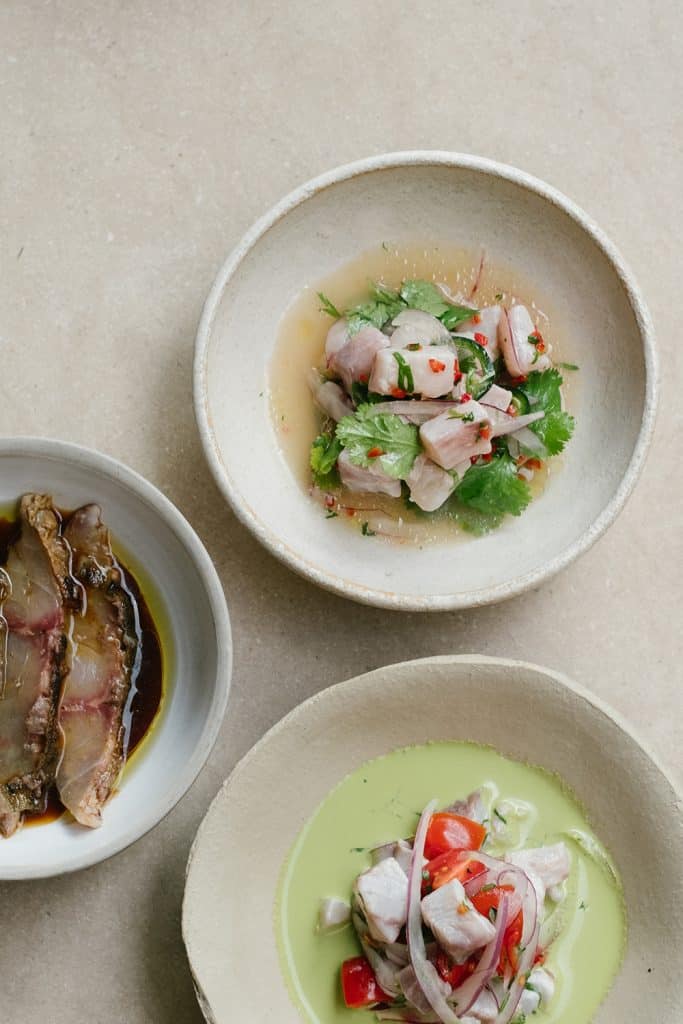
What drew you to this spot on Bedale Street?
We’d never really done anything in a destination area. Our other sites are a little bit off the beaten track, a little bit harder to find. But I saw this building and loved it – the light is amazing, the visuals are amazing. I thought, there’s this amazing opportunity, this amazing site, somebody could do something amazing with it – it may as well be me. I can’t tell you how many days and nights I spent walking through Borough Market trying to figure out what we’d do. Working in this industry may not be good in terms of lifestyle, but the creativity – that’s the bit I love. It’s bit like an artist, right? They’ll put their heart and soul into a painting. I think it’s the same with this job: we put our heart and soul into these buildings. There’s so much that has to be invested on an emotional level – forget financial, forget time: on a pure emotional level, this is an expression of ourselves.
What led you to a concept inspired by the food cultures of Greece?
Travel has inspired a lot of what I’ve done in my career. I was on a trip to the Greek islands and just fell in love – with the land and the people, the colour palette, the hills, the water, the overall balance of life on the islands. I came back and was like: “What was that all about? That was absolutely amazing.” The simplicity of the food, the open fires, the communal way of eating. I started to think about how we could interpret that here. I went to Greece eight times last year – to the islands, the north, Athens – just mining knowledge. These things don’t come straight away: you go, you scratch the surface, you go back again, you dig a bit more and you dig a bit more. From there, you start to formulate a narrative, a story. Ours is about Greece, but in the very broadest of brushstrokes. Some of the flavours we’re using at OMA and AGORA are a lot bolder than you’d get in Greece, but in the romance and the integrity and the grit, it seems very Greek in many ways.
The name OMA is taken from the Greek word for ‘raw’. What can we infer from that?
At the end of the summer, I did another trip through the Greek islands, and it was just one of those holidays that felt too good to be true. I was absolutely blown away by it. On one of the last days of our trip we went to a restaurant that had a section on the menu called ‘omá’. When I found out it meant ‘raw’, I said: “Right, that’s it, we’re going to name our restaurant OMA.” There’s the raw fish, and the menu’s quite light and vibrant, but it’s more than that. It’s the raw simplicity of what we do, raw interiors, raw in terms of its honesty, purity and integrity. There’s no faffing around. We just do simple things incredibly well.
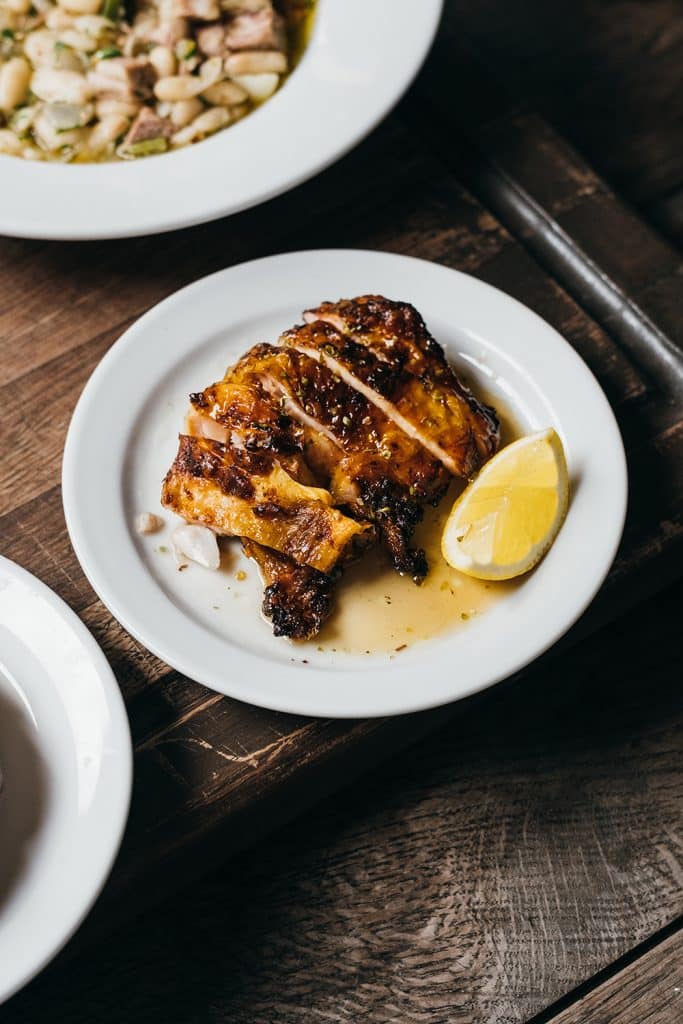
Downstairs at AGORA, you’re not taking bookings. What’s the thinking there?
Well, I think Borough is a unique place, right? A market is a transient place – people pass through. You don’t need a reservation to visit a market. So, I don’t want somebody to come in the door and be told: “No, sorry, we’re fully booked.” That’s my idea of hell. OMA is on the first floor so it’s out of sight, at least when walking by, so it’s more destinational and it takes bookings. The downstairs, we just want to make part of the market. On all three sides of the building, we’ve put this amazing shopfront that retracts the entire way. When you look at the building during the day, the doors are open, you see straight through, and it has this whole sense of accessibility and welcome. It feels like you can just walk right through it and grab something on your way.
How does the menu at Agora differ from the food upstairs?
In Greece, seafood is quite expensive, but what’s reasonable are breads, pulses, grains and the animals that roam the land – pigs, lamb, chicken. We said: “What can we take from this book?” Upstairs is a bit more fish and cured vegetables, a bit more romantic, a bit more elevated. Agora is designed to be a restaurant by the people for the people – so it’s everyday, it’s quite low spend. At its heart is a souvla, with these 1.6m spits on a 2m wood-fired grill. The chickens we’ll leave whole, and we’re going to butcher the large animals, the pigs and the lambs. They’re two very different offerings but the same Mediterranean DNA.
Cooking over fire is a strand that runs through all your restaurants. What is it that appeals to you so much?
I mean, I grew up in Barbados, right? It’s 27 degrees all year round, you have a barbecue every weekend. I grew up around it. I think the idea of cooking over fire, there’s some quite primal. It’s variable, it’s not automatic, and it needs a lot more fiddling and tempering and care. Also, the flavours are incredible – all the meat or fish or veggies caramelising over charcoal as it spits up heat and smoke and flavour. It creates warmth and it draws you towards it. A fire literally draws people in. There’s something beautiful about cooking with fire, and just very raw – that word again!
Is there an appeal to running a restaurant surrounded by the Market’s produce traders?
The energy at Borough is pretty electric. It’s the hustle and bustle. When we were thinking about this, we got so inspired by walking through the markets in Athens, and I think being amongst that here, being part of it, being in it, is huge. We want it to feel like you’re in the market. We could have done the exact same concept elsewhere, but it wouldn’t have had the same impact it’s going to have at Borough simply because of where it is.
The midnight kitchen
Shahnaz Ahsan on the family traditions and abundant food of the Eid al Fitr celebration
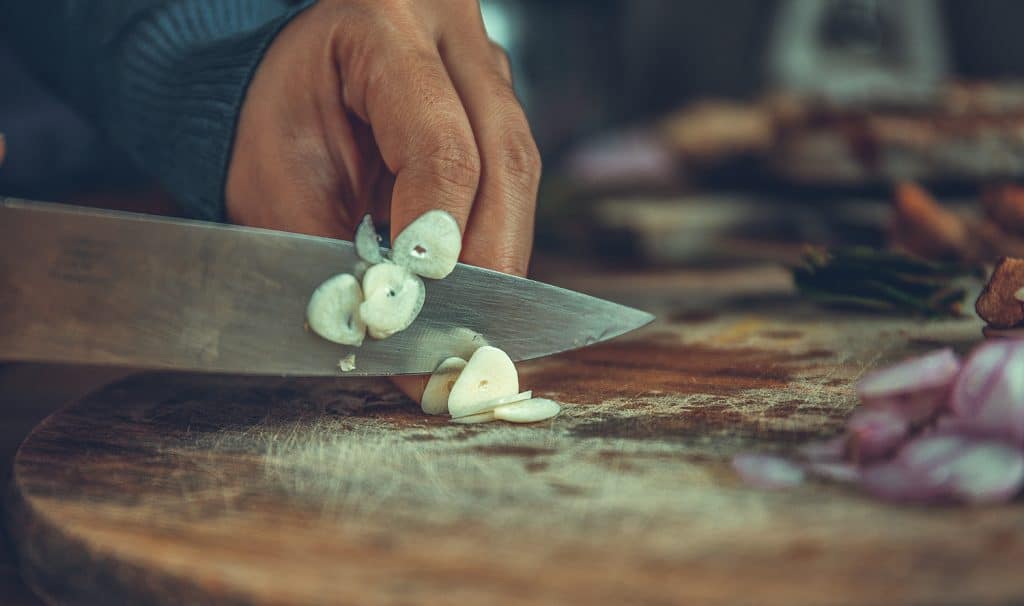

“GENERATIONS OF WOMEN IN MY FAMILY HAVE PERFECTED THE ART OF PREPARING AN EID FEAST WITH VERY LITTLE NOTICE”
Words: Shahnaz Ahsan
My sisters and I work with a synchronicity that comes from being raised by the same mother, in the same kitchen. We peel, chop, marinade and soak. One of us does the dishes while the others shape minced lamb into koftas. It’s almost midnight and we’re preparing for the feast that will be served tomorrow in celebration of Eid al Fitr.
Eid al Fitr is the Muslim festival that comes after the month-long fast known as Ramadan. Unlike holidays such as Christmas, which fall on the same date every year, the timing of Eid al Fitr changes according to the lunar calendar, meaning that the celebration can’t be confirmed until the crescent moon is sighted the night before. This adds a delicious level of unpredictability to the festive preparations – you never know until the last minute exactly when the holiday will be.
It also means that generations of women in my family – it’s women who have traditionally taken on most of the cooking – have perfected the art of preparing an Eid feast with very little notice. This is achieved through the magic combination of forward planning, flexibility and practice.

Banquet planning follows a regular pattern in our family. A couple of days before the end of Ramadan we agree on a menu, with input from all family members. Aromatic chicken korma cooked with ghee, coconut and yoghurt is a staple, as is pilau rice studded with cardamom, cinnamon and bay leaves. Next comes beef or lamb bhuna – sometimes both – depending on what the butchers have on offer. There is always a platter of succulent tandoori chicken, potato cutlets stuffed with spicy tuna or egg, and crunchy pakoras made with vegetables, fish or chicken. If we’re hosting a lot of guests, we’ll add in a kofta curry: balls of minced chicken or lamb baked in the oven then simmered in a thick, spicy sauce. There’s fish coated in turmeric and fried with onions, and countless vegetable dishes – chunks of aubergine in yoghurt sauce, cauliflower lightly spiced with green beans. For dessert we make shemai – sweet vermicelli pudding with whole milk, jewelled with sultanas and flaked almonds – and sometimes fat, juicy rounds of gulab jamun.
Then, once the menu has been confirmed, we divide our tasks. My father is given a list of what to buy. Staples such as basmati rice, ghee, cooking oil, onions, garlic and ginger are essential. Different cuts of meat and poultry from the butcher are carefully selected: whole chickens to be roasted; minced lamb for kebabs; beef on the bone for biryani or a deep, flavoursome bhuna.
Next come the tasks of peeling, chopping, marinating and soaking. Mountains of onions are liberated from their skins and left to soak in cold water to lessen the risk of teary eyes when chopping. The thin outer layer of the root ginger is rubbed off with a teaspoon. The heaps of garlic are peeled by hand, the papery casing sticking to our fingers. Although jars of garlic-ginger paste are now readily available, it doesn’t feel as though quite the same amount of labour, of love, has gone into the preparation.
The ingredients are prepped with flexibility in mind. Meat is marinated the day it’s bought, so if Eid is announced later than expected, the extra time only adds flavour to the final dishes. Jointed chickens are mixed with yoghurt, garlic, ginger, lemon juice, salt and aromatic whole spices including green cardamom, bay leaf and cassia bark, and left overnight for the korma. A side of salmon is coated with yoghurt, chilli, turmeric, garlic, ginger, lemon juice, tandoori powder and salt, ready to be roasted. Chicken breasts are marinated overnight too, ready to be coated in a thick chickpea batter and fried to make crunchy pakoras.
The third essential element in short-notice feast preparation is practice. At this stage in our lives, we all have areas we excel in and others we avoid. We each take the dishes we enjoy making the most. One sister takes on the desserts – a task I find far too finicky. Another claims the job of preparing the biryani, boiling mutton in an aromatic broth before layering with rice. I prepare the koftas, shaping each ball with one hand the way my mother taught me. There is a special kind of sociability in this late-night cooking, staying up until one or two in the morning, talking as we shape patties and fold samosa pastry. Sometimes my father will come into the kitchen to tell us not to stay up too late and to sneak a taste of what we’ve made. When we eventually collapse into bed, it is with the sweet satisfaction of knowing that it’s been a job well done – and the buzzing excitement of a day of festivities ahead.
Shahnaz’s Eid recipes
Super Zheroes
For Food Waste Action Week, Plan Zheroes co-founder Chris Wilkie explains how his charity’s decade-long partnership with Borough Market has put surplus food to the best possible use
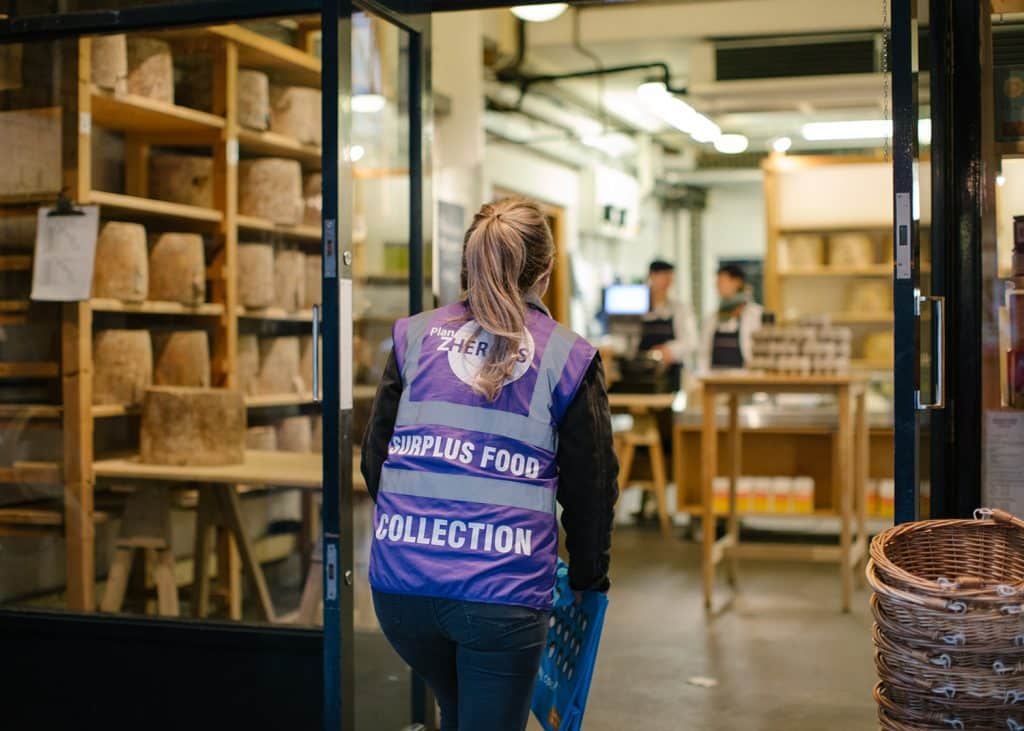

“IT’S ABOUT BRINGING PEOPLE TOGETHER TO FIND FRIENDSHIP AND SUPPORT. THE FOOD ITSELF IS JUST ONE PART OF IT REALLY”
Words: Mark Riddaway / Images: Orlando Gili
On Sunday 3rd March, as Borough Market wound down at the end of the day and the last of the customers carried their bulging bags towards the exits, a small team of volunteers set off on their familiar route around the stalls, talking to familiar traders, fulfilling familiar routines. The only unfamiliar part of the whole venture was the day itself. Volunteers from the Plan Zheroes charity have been coming to Borough Market since 2014, but never on a Sunday.
For 10 highly fruitful years, Plan Zheroes has been collecting leftover food from the Market’s traders – food that’s on the edge of being unsaleable but is still good to eat. Rather than being thrown away, this food is taken to a collection point to be weighed and documented before being carried away by representatives from local charities, who use it to feed their service users. At no point does any money pass hands – just high-quality ingredients and a lot of goodwill.
“Essentially, we’ll support any charity that needs food,” says Chris Wilkie, one of the co-founders of Plan Zheroes. “Charities that support the homeless, the vulnerable, the elderly, the young.” Partly, the objective is to feed people who might otherwise go hungry, but there’s more to it than that – as well as providing much-needed fuel, good food, when shared, can be a conduit for human connection. “It’s all about communities. It’s about bringing people together in a social situation, helping vulnerable or lonely people find friendship and support. The food itself is just one part of it really.”

Blackfriars Settlement in Southwark, a regular destination for Borough’s surplus food, is a good example. “We’ve been supporting them for a long time, and they provide a place where elderly people can go and have a nice lunch and meet and talk. Isolation is a huge problem, particularly in a big city like this, so places like that can be so important.” Other recipients, which number about 40 in total, include the St Mungo’s homelessness charity and the sheltered housing complex at Lucy Brown House.
The Plan Zheroes partnership with Borough Market began with just a single weekly collection; now, with the addition of Sundays, it’s up to five nights a week, meaning more people being fed and less food being thrown away. The new Sunday collection is a particularly important addition to the schedule – the Market closes every Monday, making the potential for surplus food even greater.
The aspiration of both Plan Zheroes and Borough Market is for all six trading days to eventually be covered, but ramping up takes time. “It takes a little while to bed in a new day,” says Chris. “The charities operate under really difficult circumstances. They’re staffed by volunteers. It takes a while for them to get into the habit of coming on a new day because they’ve got their set routines. Also, they have to pay congestion charge, and a lot have got old vehicles so have to pay the low emissions charge. That means it’s costing them more than £12 a time to come here. It’s a challenge, even though they need the food so much.”
Given the vagaries of the bounty – influenced by everything from the behaviour of the weather to the judgement of the traders, to the order in which the charities arrive at the site – none of the cooks receiving the food have the slightest clue what the day will bring, meaning that every delivery to their kitchens is like an episode of Ready, Steady, Cook. What they do know, though, is that the quality of the ingredients will not disappoint. “It’s food that the traders can’t sell tomorrow, but still it’s all top-quality food,” says Chris. “It’s all fine to eat, and most of it will be used the same day or the day after by the charities.”
Plan Zheroes in numbers
Over the past 10 years, the Borough Market partnership has:
— Saved 115 tonnes of food
— Created 270,000 meals
— Avoided 450 equivalent tonnes of CO₂ emissions
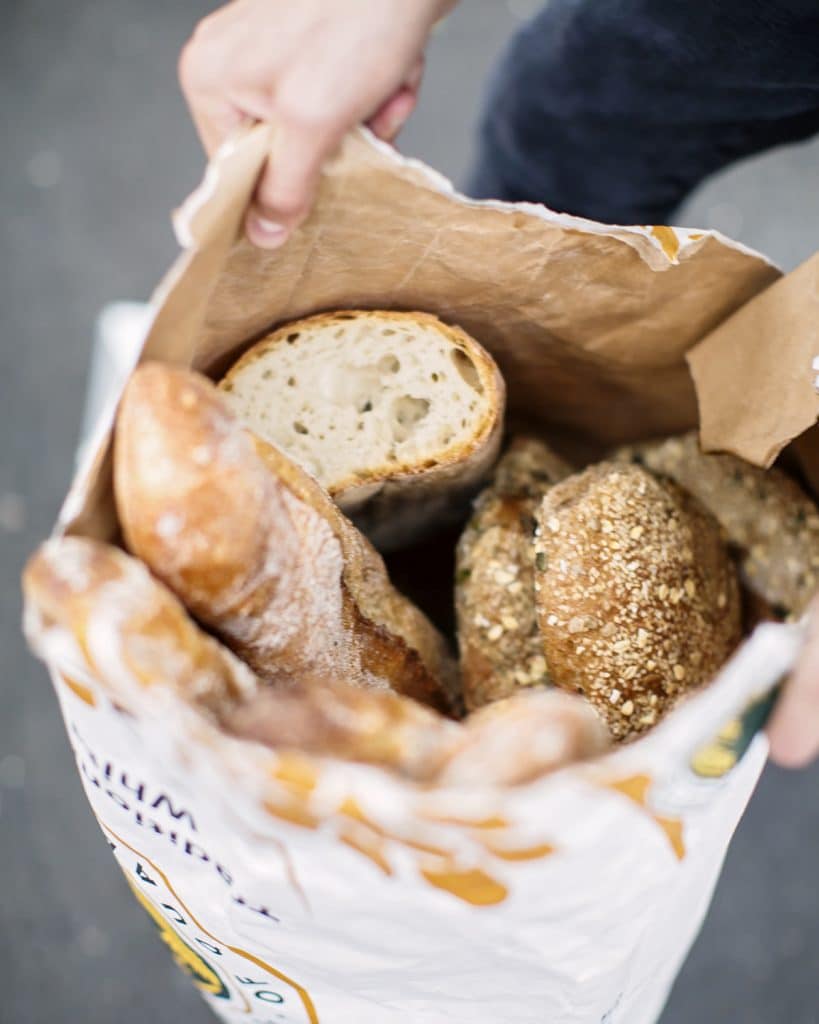
For the Market’s traders, the ideal is to create as little surplus as possible, but the idea that any surplus might be thrown away would break their hearts, hence the enthusiasm with which so many of them participate in the scheme. “Every food professional I’ve ever met hates to throw good food away,” says Chris. “They’ve spent time and money creating it, and they want it to be eaten and enjoyed. We’re keeping it out of landfill and we’re getting it to people instead.”
Plan Zheroes was founded by Chris, Maria Ana Neves and Lotti Henley, who passed away in 2021. “This was about the time of the financial crash back in 2008,” says Chris. “None of us had any experience of charity work, but we’d heard about a single mother living in Earl’s Court. She had three children and couldn’t afford to give each of them a hot meal every day, so they had to take it in turns. We’d also been reading about supermarkets throwing food away, and we just thought, this is just crazy. There’s this mother who can’t afford to feed her kids, and just down the road there’s a supermarket binning perfectly good food. So, let’s see if we can do something about it.”

The tragedy is that food poverty in this country is now even more widespread and acute than it was at the start of the Plan Zheroes story. “You know, there are more people going hungry in the UK today than there are living in the whole of London,” Chris continues. “Something like 13 million people are affected. Surplus food shouldn’t be seen as a solution to food poverty – it’s really a sticking plaster – but whatever we can do to help, we’ll do.”
The charity’s hands-on approach at Borough Market is an exception to the norm. Most of the team’s work around the UK is carried out through an online platform. Registered businesses that have surplus food post a notification on the platform. An alert goes out to charities in the local community, and those charities make the collection. “In most cases we never see the food,” says Chris. “We don’t collect it, we don’t store it, we don’t deliver it. All we do is we act as a broker between the businesses that have the food and the charities that need it.”
The source of this surplus food could be a cafe, a restaurant, a food shop, a hotel, a hospital, a school, an airline – even a chart-topping band. “Recently we’ve been helping a US charity called Musically Fed who provide food after rock concerts. So, The 1975 played The O2, they played in Glasgow, and we helped to distribute the leftover food from their rider.”
Somewhere out there, a charity’s service users got to eat Matty Healy’s dinner. The Borough Market partnership may lack quite the same star wattage, but it more than makes up for it in its volume, consistency and impact. Every week, day after day, people who need feeding, people who relish the opportunity to break bread together somewhere warm and welcoming, get the chance to enjoy food of the very highest quality. This happens because Borough’s traders and all the volunteers involved in the process are determined to make it happen, squaring the circle between those who have excess food and those who need it.
“If surplus food is being generated then the only good thing you can do is to give it to people,” says Chris, “and that’s what we try to do.”
Faith, food and farming
Mark Oakley, the new dean of Southwark Cathedral, on his roots in Shropshire farming country, the connections between food and spirituality, and his menu for the Easter celebrations


“FOOD IS MADE TO BE SHARED – SOMETHING ABOUT THE HUMAN HEART SLIPS INTO PLACE WHEN YOU EAT TOGETHER”
Words: Mark Oakley / Images: Tom Bradley
It’s great to find myself as dean of a cathedral surrounded by food. Having grown up in Shropshire, I know something of the hard work and commitment of those who produce and sell our food. My neighbours were dairy and vegetable farmers, cheesemakers, butchers, honey farmers, bakers, or the owners of small businesses connected with them. There is a rather cruel saying: “Shropshire born, Shropshire bred – strong in the body, thick in the head.” In truth, it’s quite a good description of me. However, as I grew up, I learned so much about the lives of these hard-working people who often get forgotten when we rush around supermarkets or shove down a quick sandwich. To find myself a neighbour again to such people feels to me a bit like a homecoming,

I’m struck by how food is so often intimately connected with religion and spirituality. I think it may be to do with two truths. First, that food is made to be shared – something about the human heart slips into place when you sit down together and do exactly that. In my own Christian tradition, to share bread and wine shows both our uniqueness and our equality as we become ‘companions’, a word that literally means ‘those who break bread together’. Secondly, food is a great symbol of the future. We need it to live another day – to be strengthened to achieve things. Faith, too, asks us to be more loyal to the future than to the past. The bread we share in church is eaten to make us more hungry – hungry for goodness, justice and community.
Sharing food is an essential part of our Easter celebrations. You won’t be surprised to know that my Shropshire roots mean that Easter for me has to have some Welsh spring lamb in it. I travel back to the county each Christmas to get my goose from the fields near where I was born (I love goose!), and I’m tempted to do the same for my Welsh lamb, as Wales is about six miles from where my grandmother (aged 102), who brought me up as a child, still lives. She always used to roast our Easter lamb simply with some garlic, served with leeks, homemade mint sauce, and roast potatoes – they were like little duvets inside, they were so fluffy. I’m a cheese lover, so some fresh goat’s cheese with some damson jelly rounded the meal off well.
My partner enjoys baking, so these days a lot of cakes emerge from the kitchen which I have to keep my hands off. At Easter, though, we always try to make a simnel cake. I tend to roll the balls of marzipan to represent the 11 disciples of Jesus (Judas gets missed out…). Together with a good cup of black tea, I find myself putting my feet up after a busy Easter day in church with a happy slice.
When I was a curate at the age of 24, I worked for a wonderful vicar in St John’s Wood. He had a tradition of opening a bottle of champagne after the Easter morning service and I have to admit that, following his early death at the age of 59, I tend to buy a bottle and do the same now to toast his memory and all the wonderful things he taught me. I have no time for religion that tries to be an example of power. I just try to remember those who have instead shown me the power of example.
This year I think I’m going to buy, or maybe make, some Easter paska to remember the people of Ukraine. Ukrainians love horseradish too, so maybe I’ll look out for some of that too – I like the way it perks up a dish. Other Easter treats for me include hot cross buns (of course!), babka, pulla from Finland, colomba di pasqua, Jamaican Easter spice cake, and capirotada from Mexico. The problem is that Holy Week and Easter are so busy I rarely get the chance to shop, never mind bake, but this year I’m determined that I’ll have a go at making at least one of these!
Date nights
Syed Usman Shah of Date Sultan on ethical sourcing, inventive fillings and the tradition of eating dates during Ramadan


“DURING RAMADAN, ONE TRADITION INVOLVES CONSUMING THREE DATES AND A GLASS OF MILK AS A PRE-DAWN MEAL”
Words: Shahnaz Ahsan
“Dates are tasty,” says Syed Usman Shah, founder of Date Sultan. “But when they’re ethically sourced, they’re even tastier.”
Date Sultan is a social enterprise that imports premium dates from the Middle East. As well as supplying its customers with treats such as salted caramel-stuffed medjool dates, the company’s mission is to tackle modern slavery – a pervasive practice throughout much of the region’s agricultural sector. And Date Sultan’s peak sales season is just around the corner.
“For us, as Muslims, there is no Ramadan without dates,” he says, referring to the holy month observed by 1.8 billion Muslims across the globe, who fast from sunrise to sunset, avoiding any food or drink during daylight hours. Dates are among the foods that are traditionally eaten to break the fast each evening.
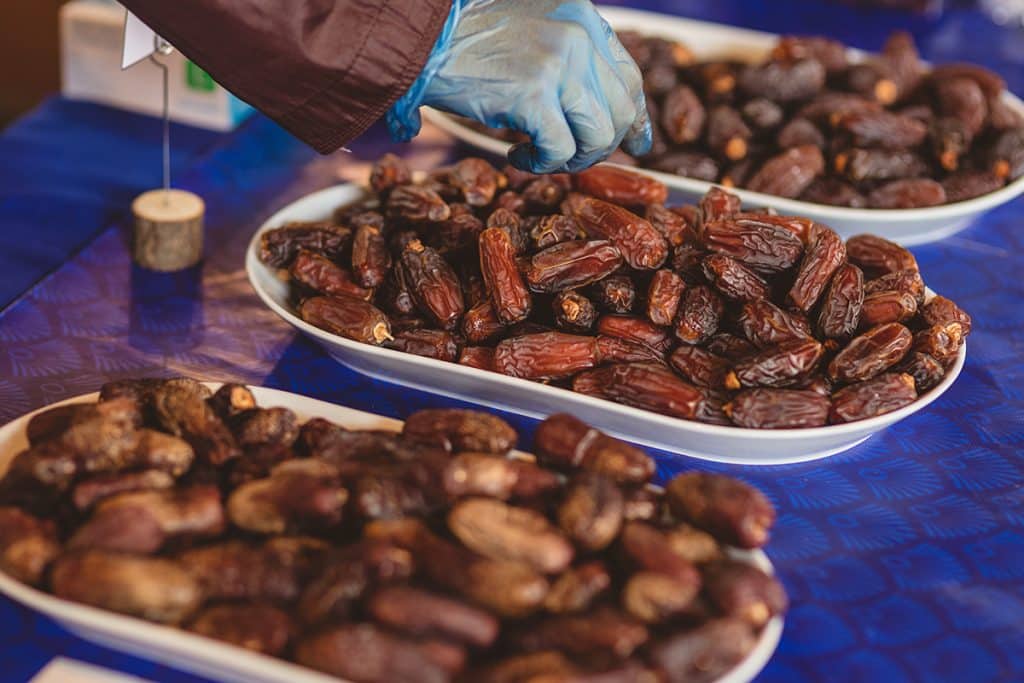
Born in Pakistan, Usman was just one month old when his parents moved the family to the UK. Now based in Newham, east London, Usman credits his parents with instilling a sense of community responsibility in him. Growing up, he witnessed them gifting dates to friends, family and neighbours during Ramadan – a common practice among Muslims.
When he travelled to different parts of the Middle East as a young adult, Usman was disturbed by the treatment of migrant workers – usually from Pakistan, India and Bangladesh – and their dire working conditions on date plantations. Resolving to find a fairer way of doing things, Usman set up Date Sultan and made ethical trade the cornerstone of his business. Today, the company has direct contracts with farmers in Egypt, Jordan, Palestine and Saudi Arabia, which means that Usman and his team can ensure fair wages are paid throughout the supply chain, regularly conducting audits and inspections without relying on any third parties.
While the roots of Usman’s business model are firmly embedded in his traditional upbringing, Date Sultan’s success was catapulted by the distinctly modern phenomenon of social media. One video Usman posted on TikTok garnered 500,000 views overnight. The next day, Usman says, “we didn’t have enough dates on hand to meet the orders”. The solution was to crowdfund. After raising £20,000 through community donations from over 100 people, Usman imported a 40-foot container filled with dates. The rest is history.

Usman’s love of experimentation has been a cornerstone of his company’s success. He began by pitting and stuffing medjool dates with almonds and pistachios and toying with new fillings. One evening during Ramadan, while preparing for iftar – the meal to break the fast – Usman stuffed some medjool dates with salted caramel. From his guests’ reactions, Usman knew he was onto a winner. Today, Date Sultan offers a wide range of innovative fillings, such as candied ginger and Lotus Biscoffy, as well as variety packs and single-origin date selections.
Of the many date varieties in existence, Usman’s own favourite – “a must for Ramadan” – is the grandly titled king jumbo ajwa: “It is said to be the variety most enjoyed by the Prophet Muhammad – and I can see why. It’s moreish and has natural flavour tones of caramel.” What makes it even more special is that it only grows in the city of Madinah, Saudi Arabia, known as “the city of the Prophet”.
Date Sultan offers a detailed rating system for the varieties on offer at the stall, scoring each one out of five on qualities such as sweetness and chewiness and offering detailed tasting notes. All this helps customers find the right date for the right job. For example, Usman’s favourite date-based recipe is sticky toffee pudding. “But – and it’s a BIG but – so many people make them with medjool dates,” he sighs. “Big mistake. It should be made with the mabroom date which literally tastes like toffee, but without any added sugar or preservatives.”
During Ramadan, which this year is expected to start around 10th March, one tradition involves consuming three dates and a glass of milk as a pre-dawn meal, setting up the body for a long day of fasting. Usman also recommends that ambara amber dates – a variety he says is a “nutritional powerhouse” – be soaked in a glass of water overnight and the liquid consumed the following morning as ‘an all-natural energy drink’.
While Ramadan is one of the busiest times for date sales, Usman believes that the fruit should be enjoyed all year around. According to an Islamic proverb, “a house with dates shall never go empty”. He also recalls a blessing made by one of the neighbours he gifted dates to as a child at his father’s behest. “May it rain dates from your hand,” the man told a young Usman. Many years of dedication and hard work later, it appears that his blessing was heard.
Q&A: Michael Hickson
The owner of the new Hickson & Daughter greengrocers stand on seasonality, sourcing and how Borough Market turned his life around
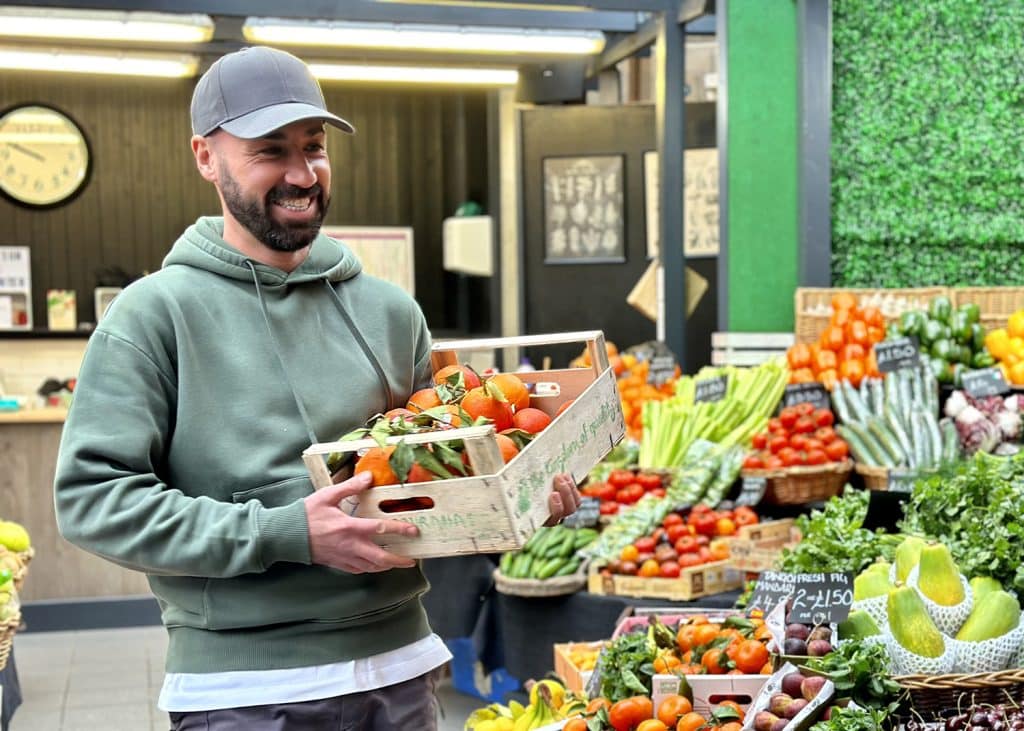

“I’VE BEEN AROUND MARKETS FOR SO LONG AND I’VE NEVER SEEN AN ‘& DAUGHTER’ SIGN. I’VE SEEN SO MANY ‘& SONS’”
You’ve been at Borough Market for more than 20 years. What was it that first brought you here?
I was 17, and being a proper little adolescent, if you know what I mean. I was getting in a lot of trouble, causing all kinds of bother for my dad. My dad had a friend in the wholesale trade, and he said: “Do you want me to get Michael a job?” I came here to work for Elsey & Bent, and I didn’t look back from the moment I started. It was a complete eye-opener. I grew up round a council estate and fruit was a luxury for us. I’d never even seen an avocado before. I remember seeing raspberries on the stand for the first time and being: “Oh wow!” I knew what a raspberry was, obviously, but I’d never seen them in such quantities. I took to it straight away. I liked the whole aspect of talking to different people. I liked the whole aspect of designing the displays. It was right up my street.
Apparently, your family connections at Borough run deep…
I didn’t really know much about it when I started here, but a lot of my family history is here. All the men on my dad’s side had worked at the wholesale market at some point. I had great-uncles and great-grandads who’d been in the trade. My dad had worked up here as a boy and he used to say things like: “Oh, Great-Uncle Arthur had a heart attack right there on that spot!” Borough’s changed so much since those days. When I first got here, the retail had only just started and there was no hot food at all. It’s so different now.
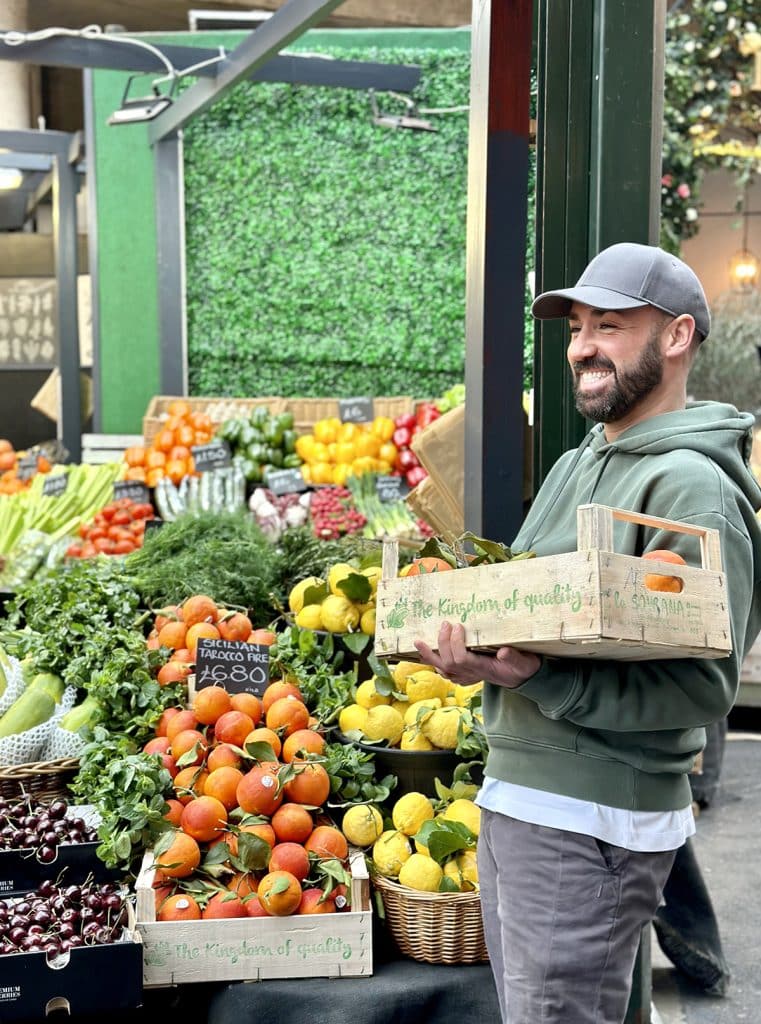
Tell us about the name, Hickson & Daughter. Where did that come from?
So, I’m a separated father, and we have joint custody of our daughter, Millie. I have her four nights a week, and she’s such a massive part of my life. She’s my world. I just thought, I’ve been around markets for so long and I’ve never seen an ‘& Daughter’ sign. I’ve seen so many ‘& Sons’ everywhere. And it was it obvious to me: Millie’s only seven now but she’s going to be a massive part of this, and it’s about time we had an ‘& Daughter’ sign up there. Also, my father passed two years ago, and having that link to the Market through my dad, I wanted his family name up there as well. Hickson & Daughter was the perfect fit, really.
How would you sum up what Hickson & Daughter is all about?
We’re a proper traditional greengrocers. We’re expressing the history of this place as a fruit and veg market. It’s about being here for the community, for the locals. No bells and whistles, just proper high-quality produce, locally sourced whenever we can, set out on beautiful displays. It’s all about the display for me: my ethos is that we should always have the best display in the Market – and I believe we do!
As the seasons pass, will we see those displays changing dramatically?
Yes, a hundred percent. There’ll be one corner of the stand, right at the front – the main show – and that’ll be very seasonal, whatever time of year it is. At the moment it’s a bit harder, because there’s not really much about. The veg is pretty good, but the fruit side is a bit higgledy-piggledy. But as the seasons go on, it’ll have all the British berries, then the English plums, then the apples will arrive. I quite enjoy the English asparagus season – you can really get your teeth into that. You go all-in for a short six weeks and then it’s over before you know it. And obviously British people love their own produce, so they get really excited by British asparagus – it’s quite a passionate six weeks!
So, where are you sourcing all this produce from?
I try to get the seasonal stuff direct. I’ve just received some carrots and beetroot from Royal Oak Farm, who are an organic-based farm. That was my first order. And then some potatoes from a farm in Kent. As I go on, there’ll be, like, four, five, six items a month sourced direct from separate farms. It’s hard – I’m getting a lot of people saying no because they want to sell in larger quantities – but I’m getting there. For the rest, I didn’t want to be traipsing around, driving back and forth to wholesale markets, so I spoke to Grovers, the wholesalers based at Borough, and struck a deal with them for my day-to-day orders.
One of the big challenges with fresh produce is making sure as little as possible is wasted. How do you go about that?
Wasting anything is heartbreaking. I’ve seen companies who are just: “Pile it high, pile it high,” and I’ve witnessed how bad that can be. But it’s more than doable getting it perfect. I take great pride in getting the ordering right. The girls who work with me say that when I’m doing the list, I’m just in the zone. I want it to be perfect – what I order, the amount I order. When it comes to displays, there are ways of doing it: if you’re clever, you can make it look like it’s piled high without it actually being piled high, if that makes sense. And if anything is left over, we’re working with Plan Zheroes to find a good home for it.
What has the response been like so far?
Elsey & Bent had such a big regular customer base, and they’ve been really excited to see us opening. People remember me, people who live local. A lot of them have seen me growing up. They’ll come up and say: “I remember when you started at 17!” One guy was just beaming. He was like: “I can’t believe it. I’ve seen you go from that to this.” A lot of the older ones still call me Mikey – that’s my younger name. I feel like that might change now. I was always the boy on the stall. Now I’m the man!


